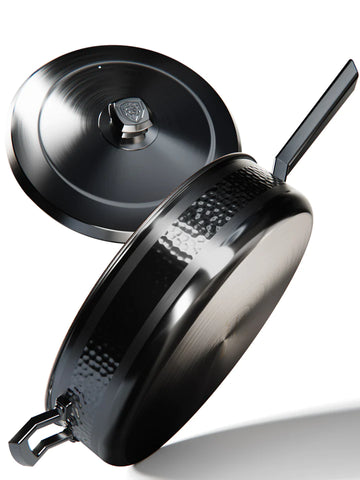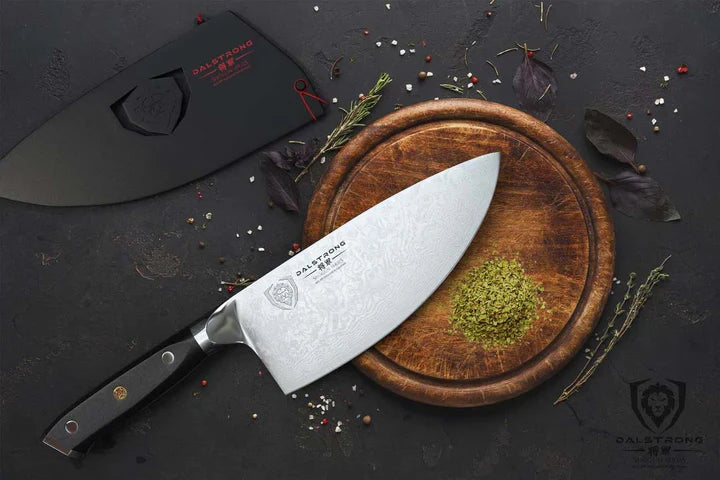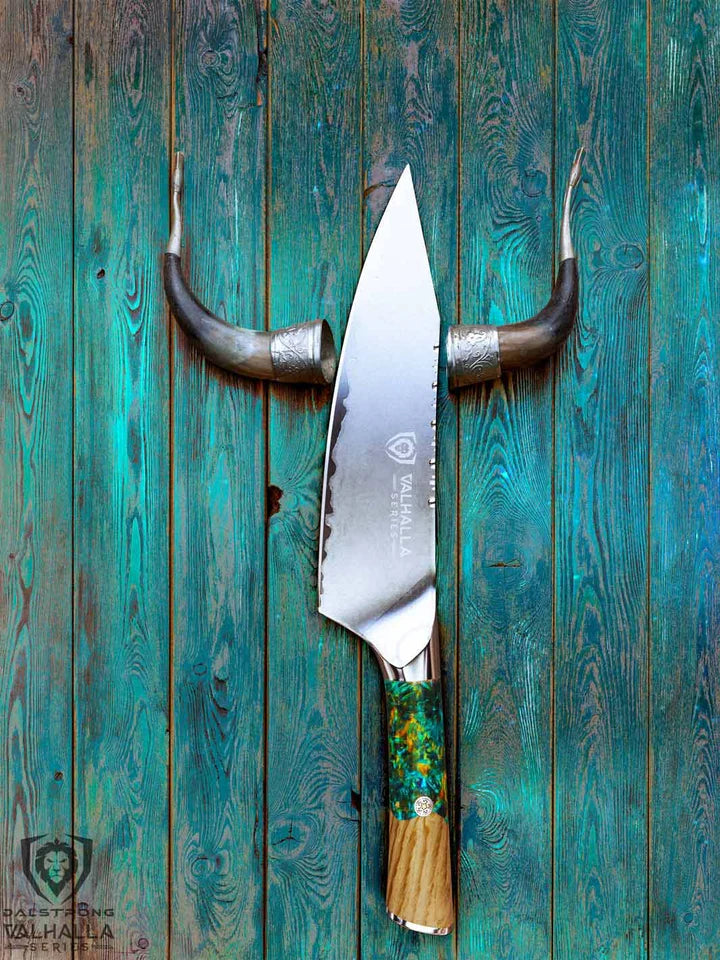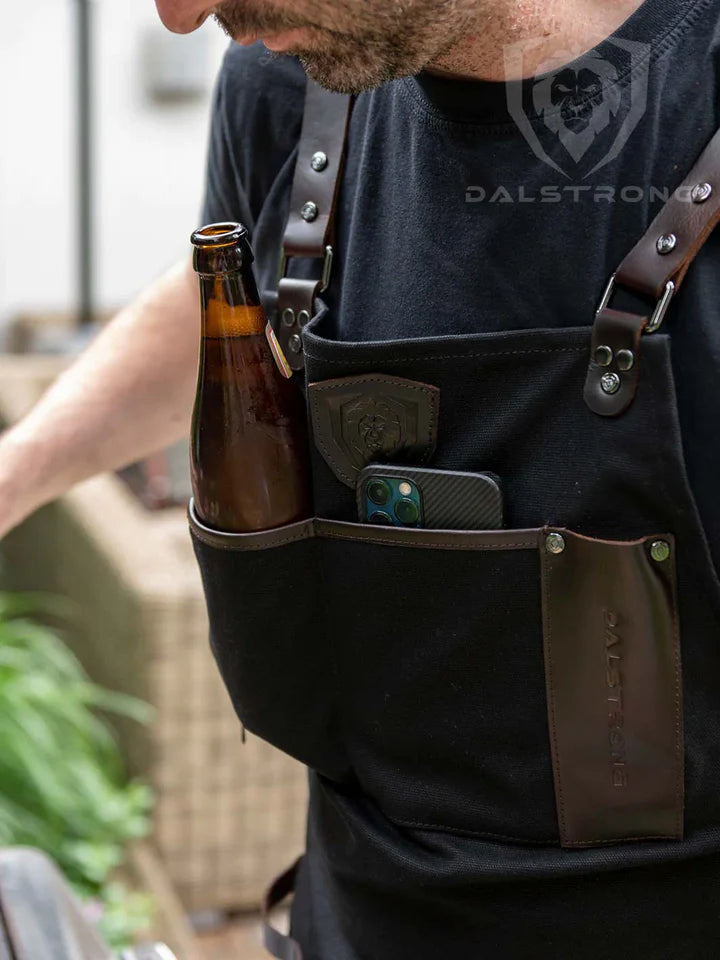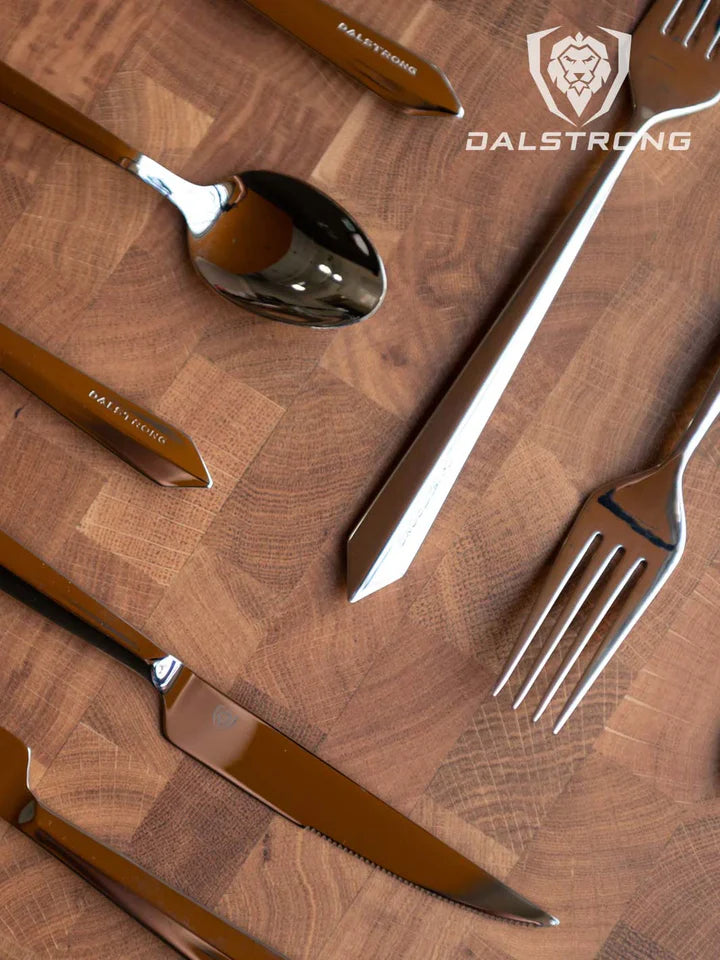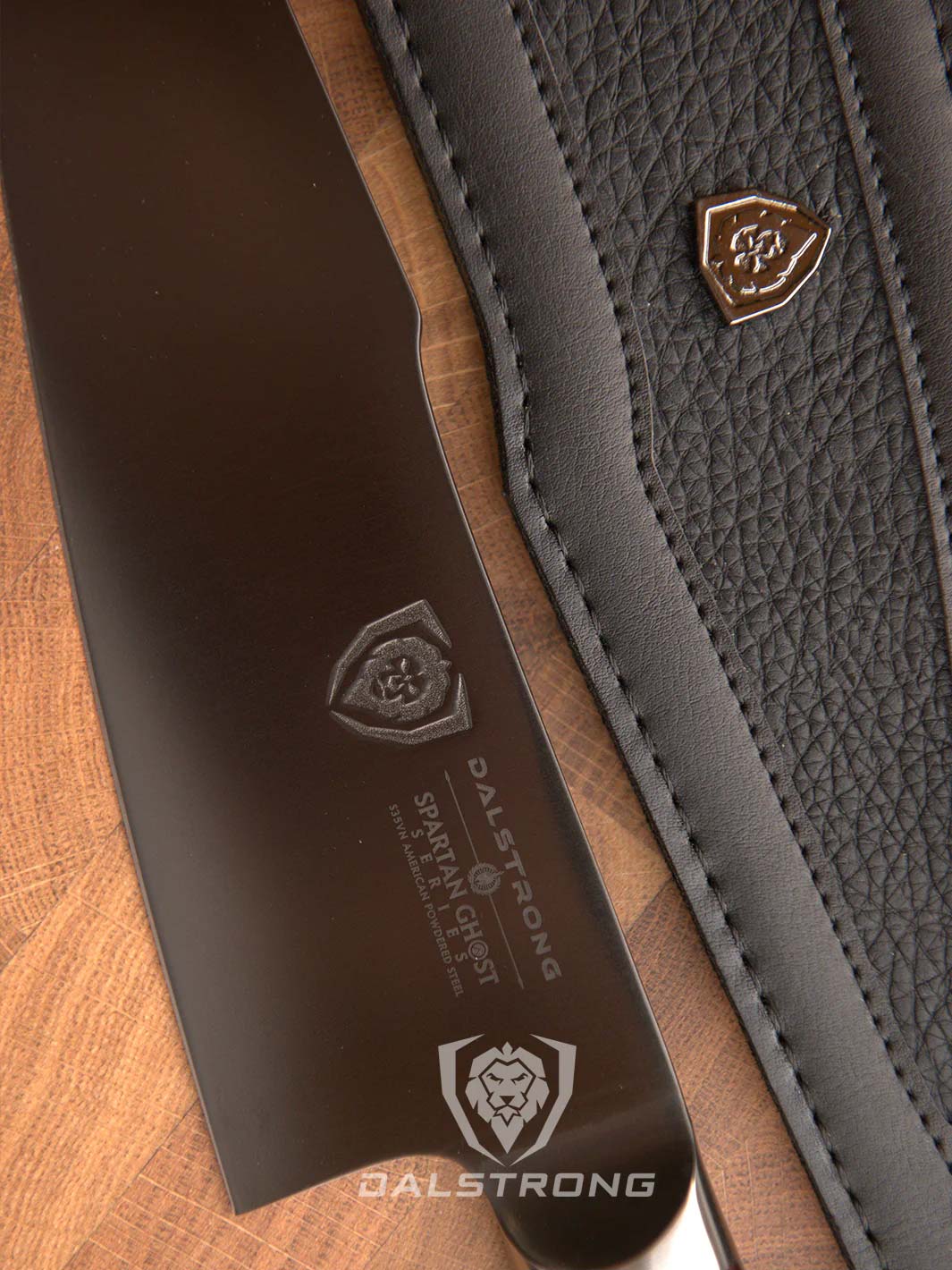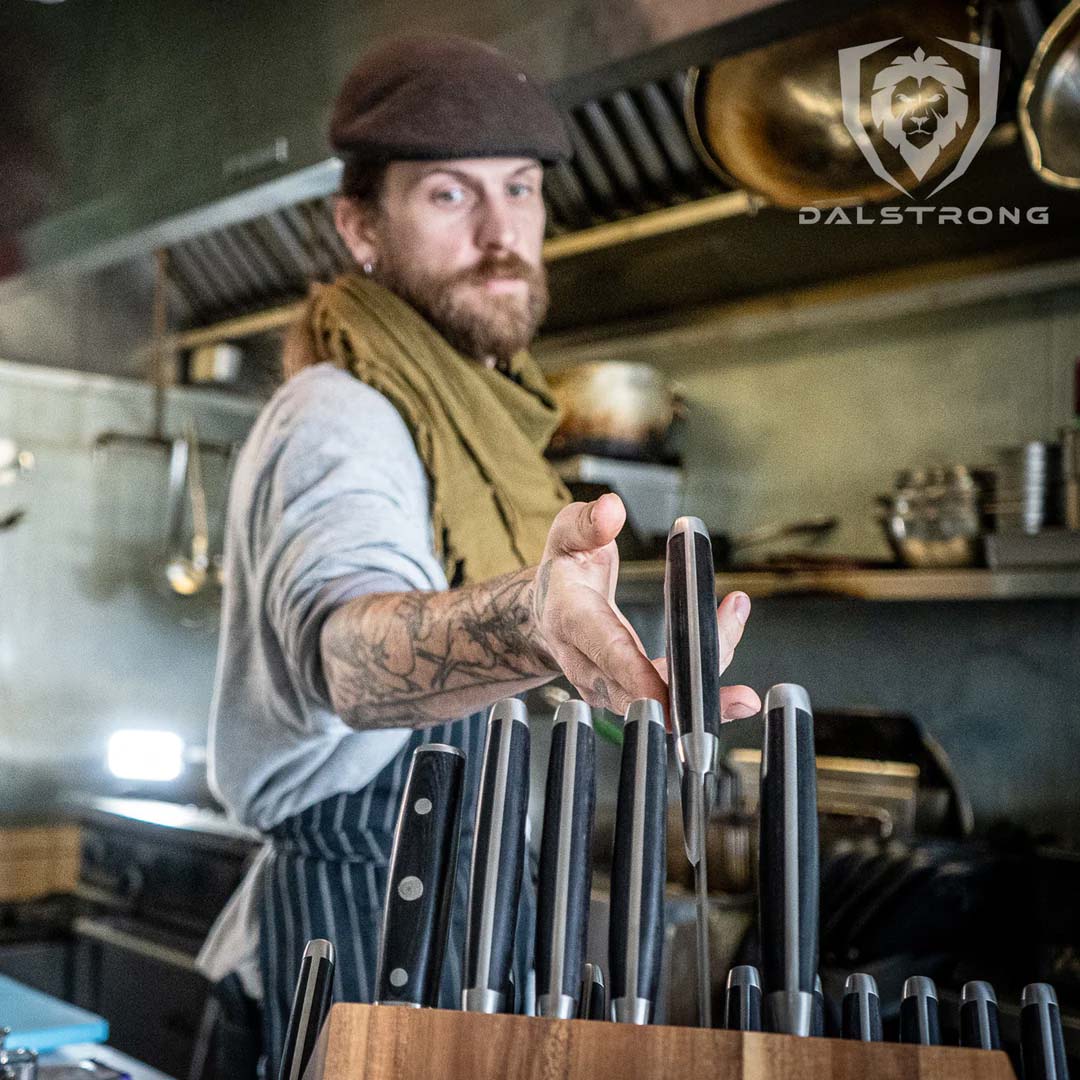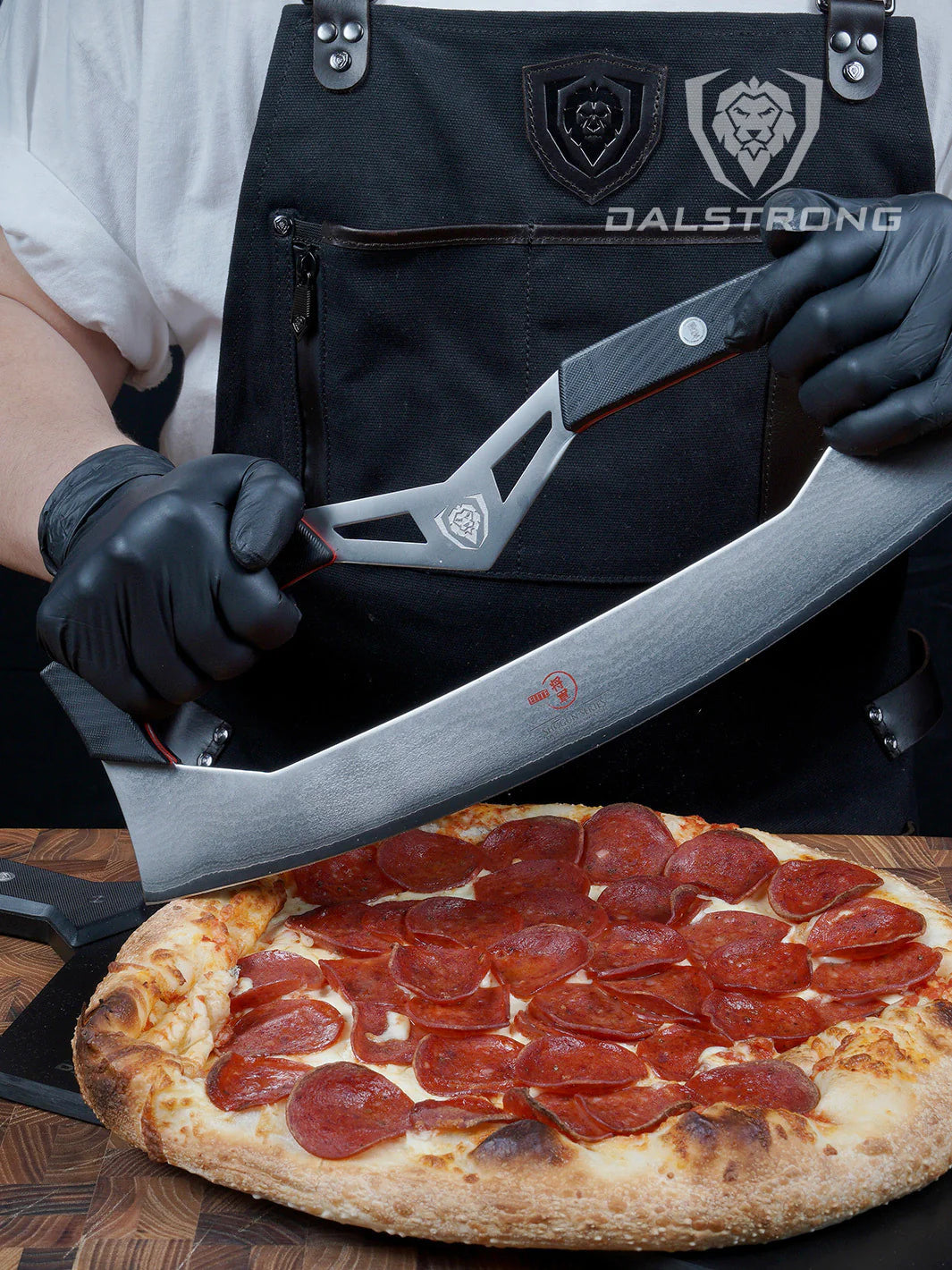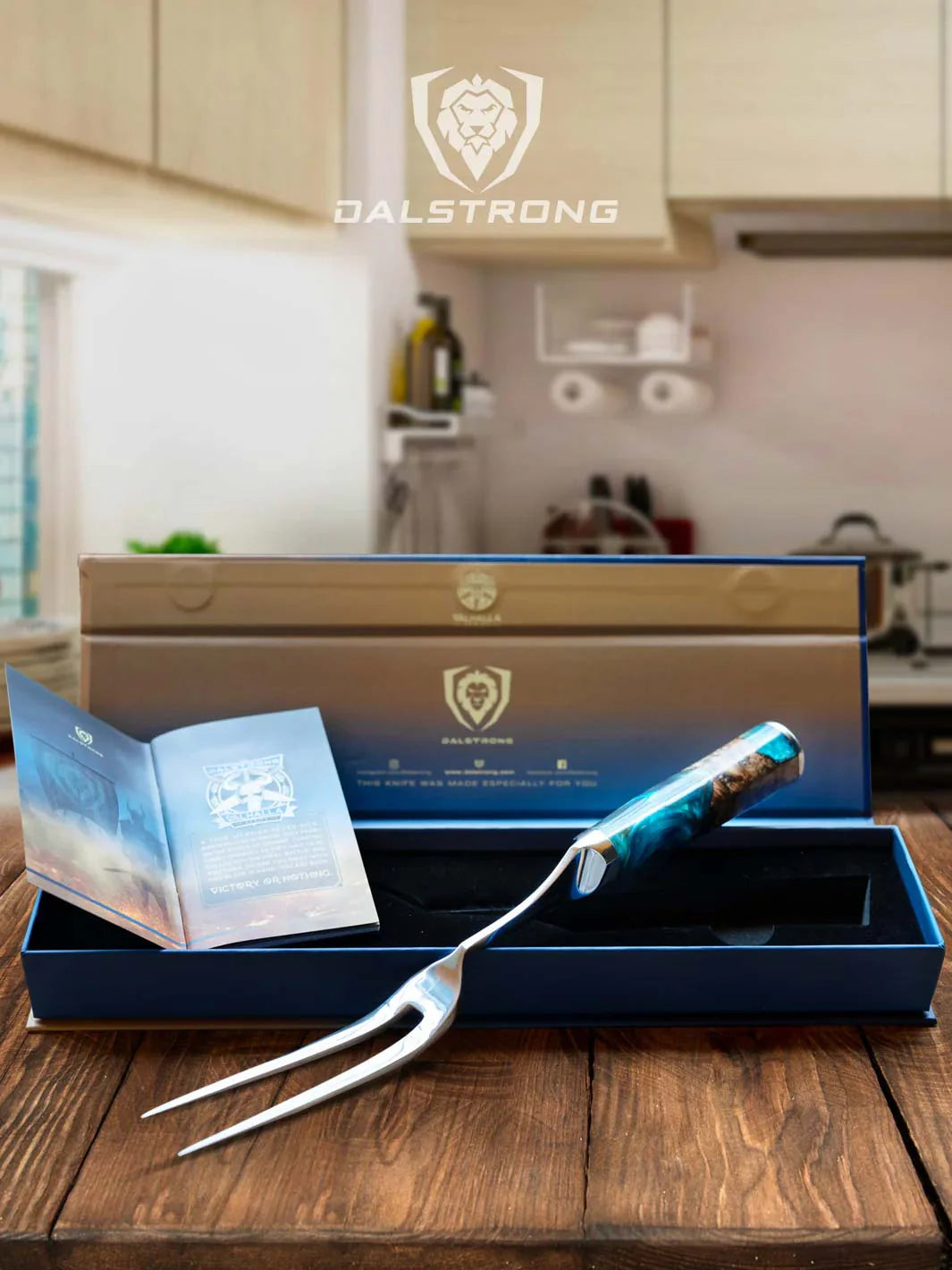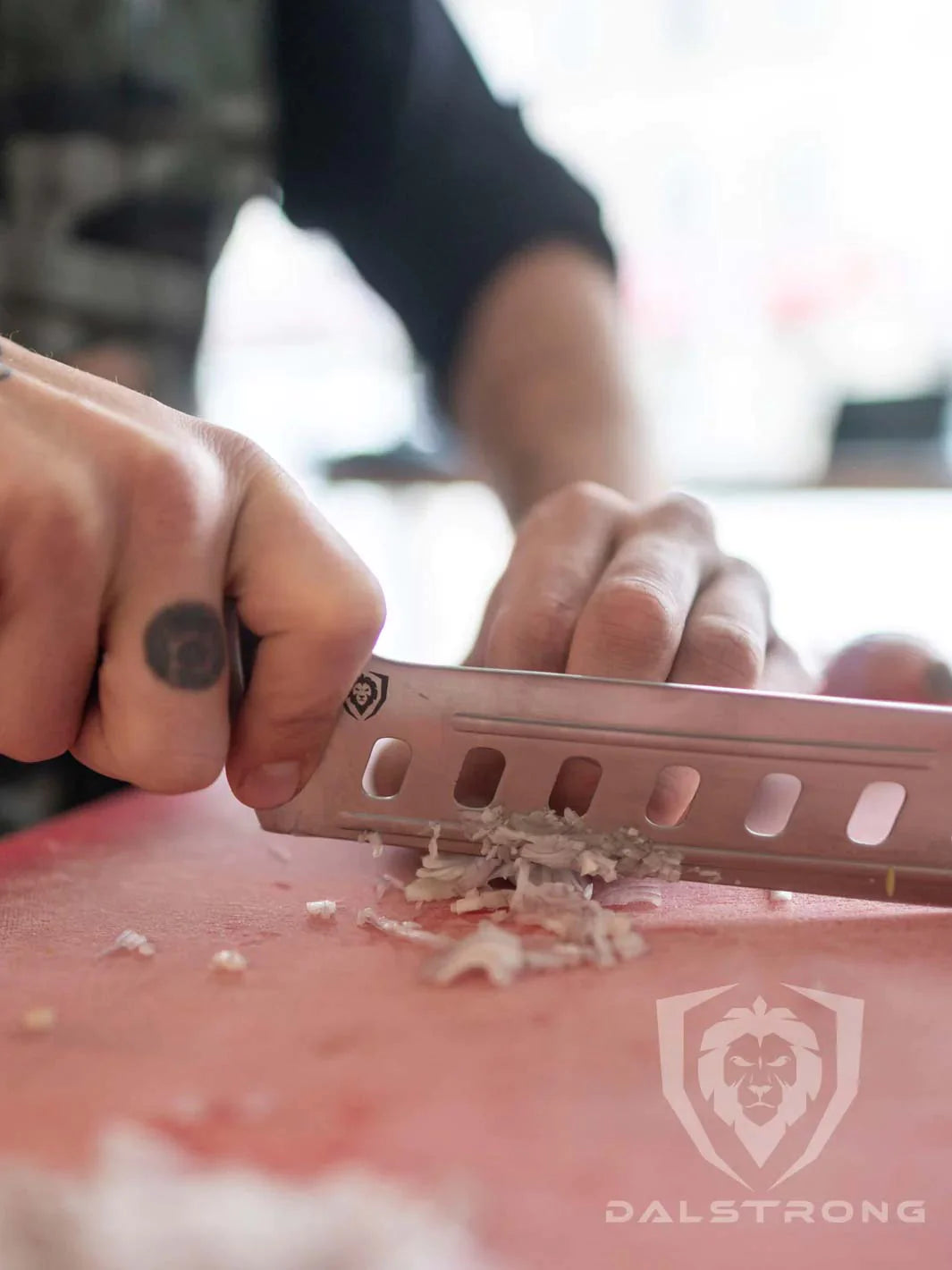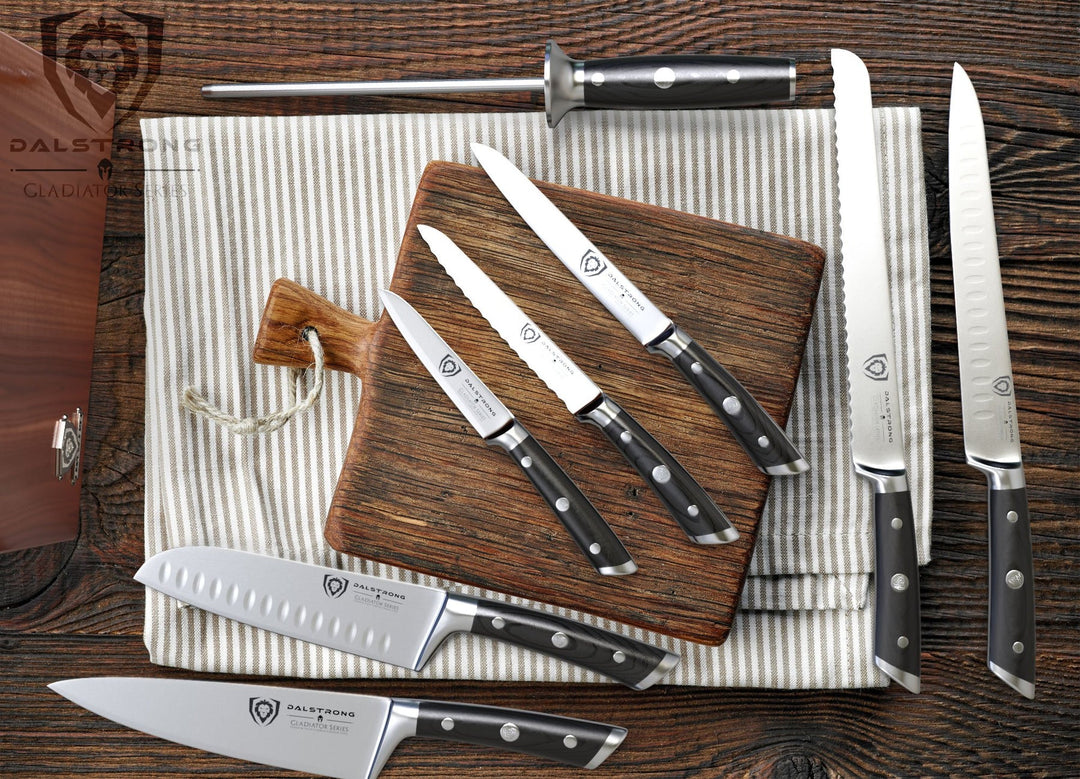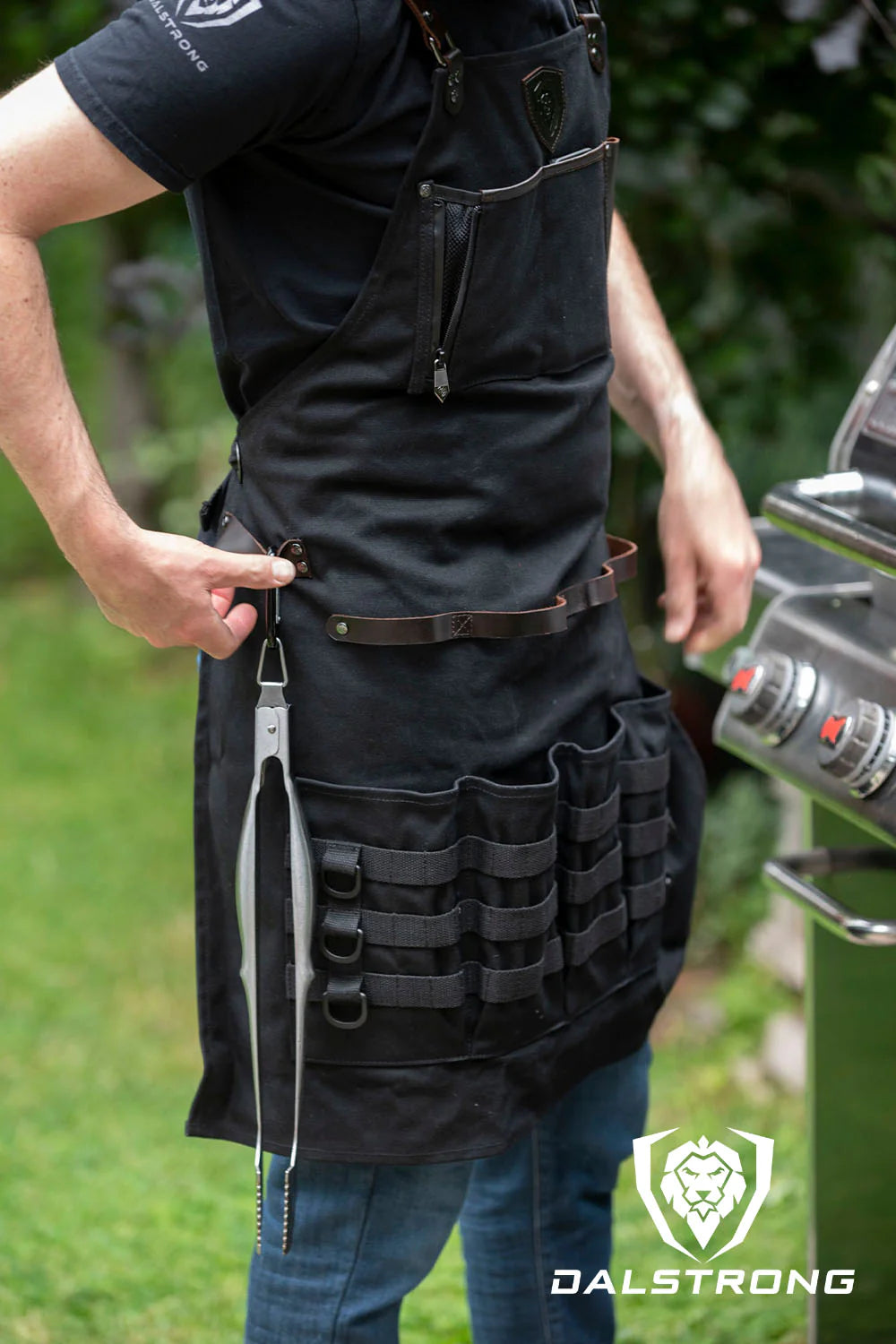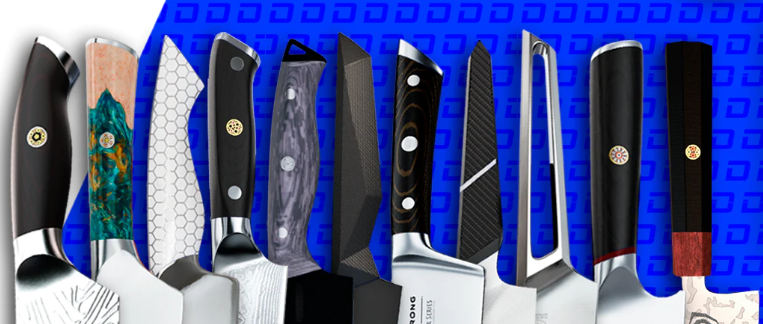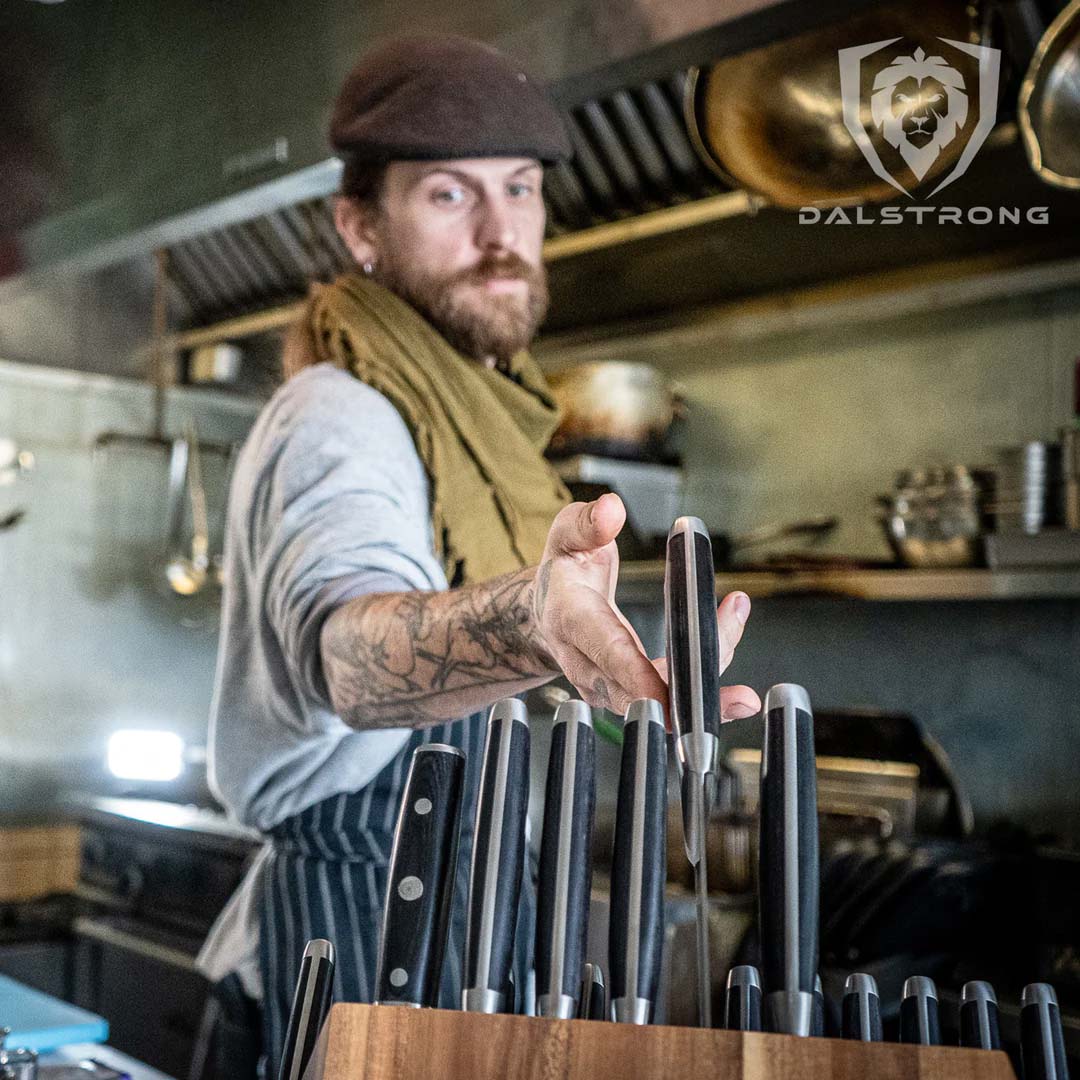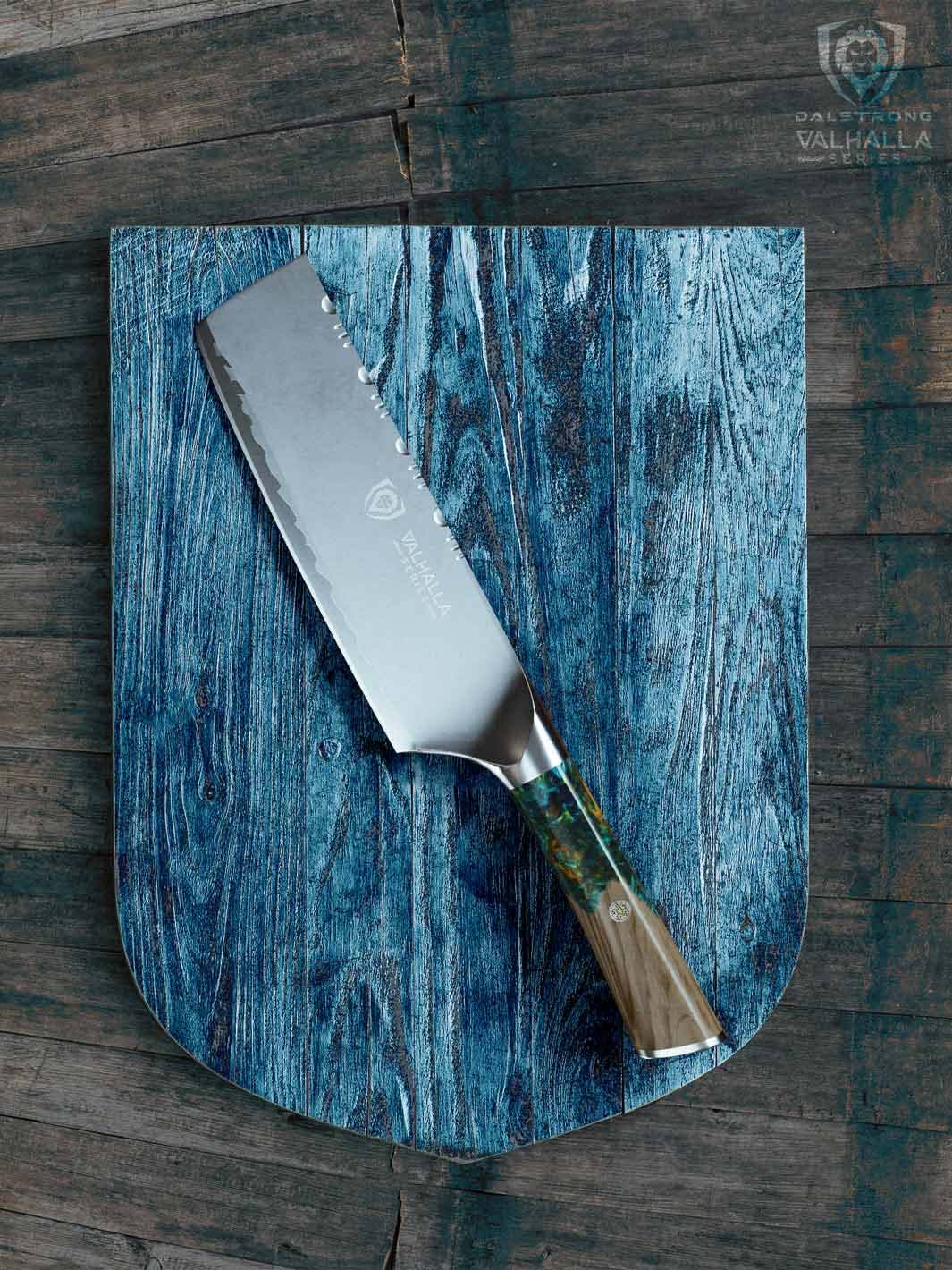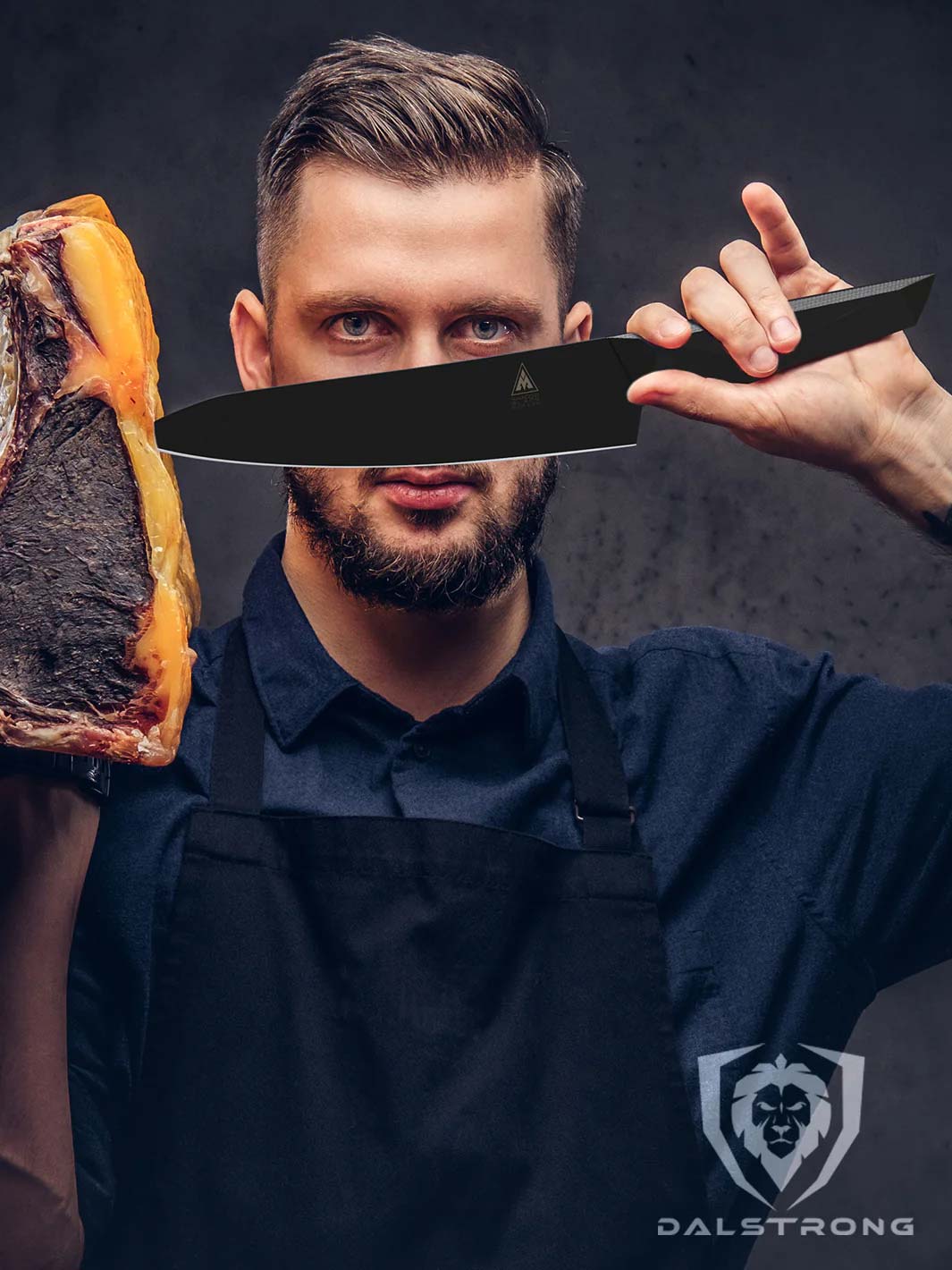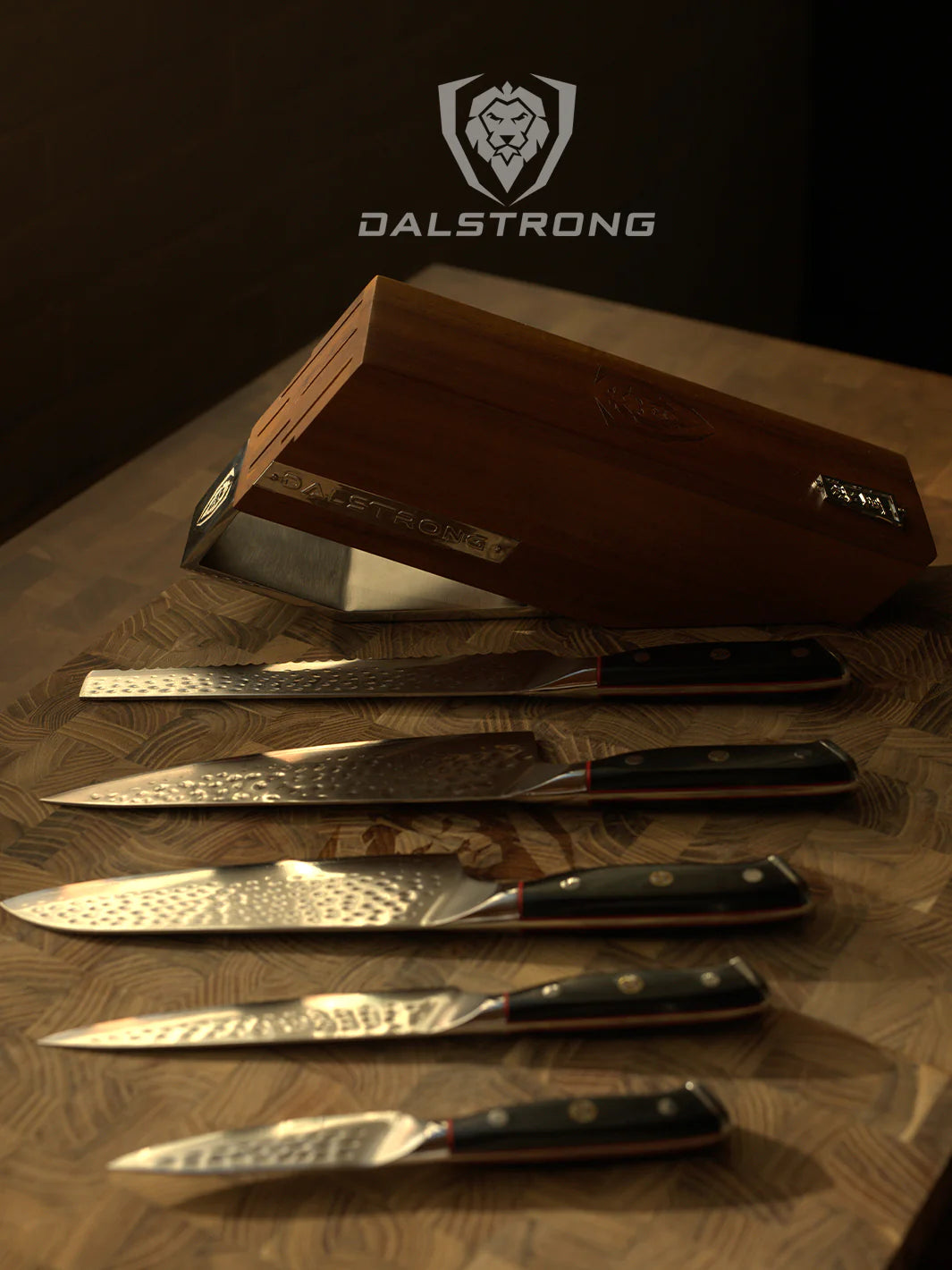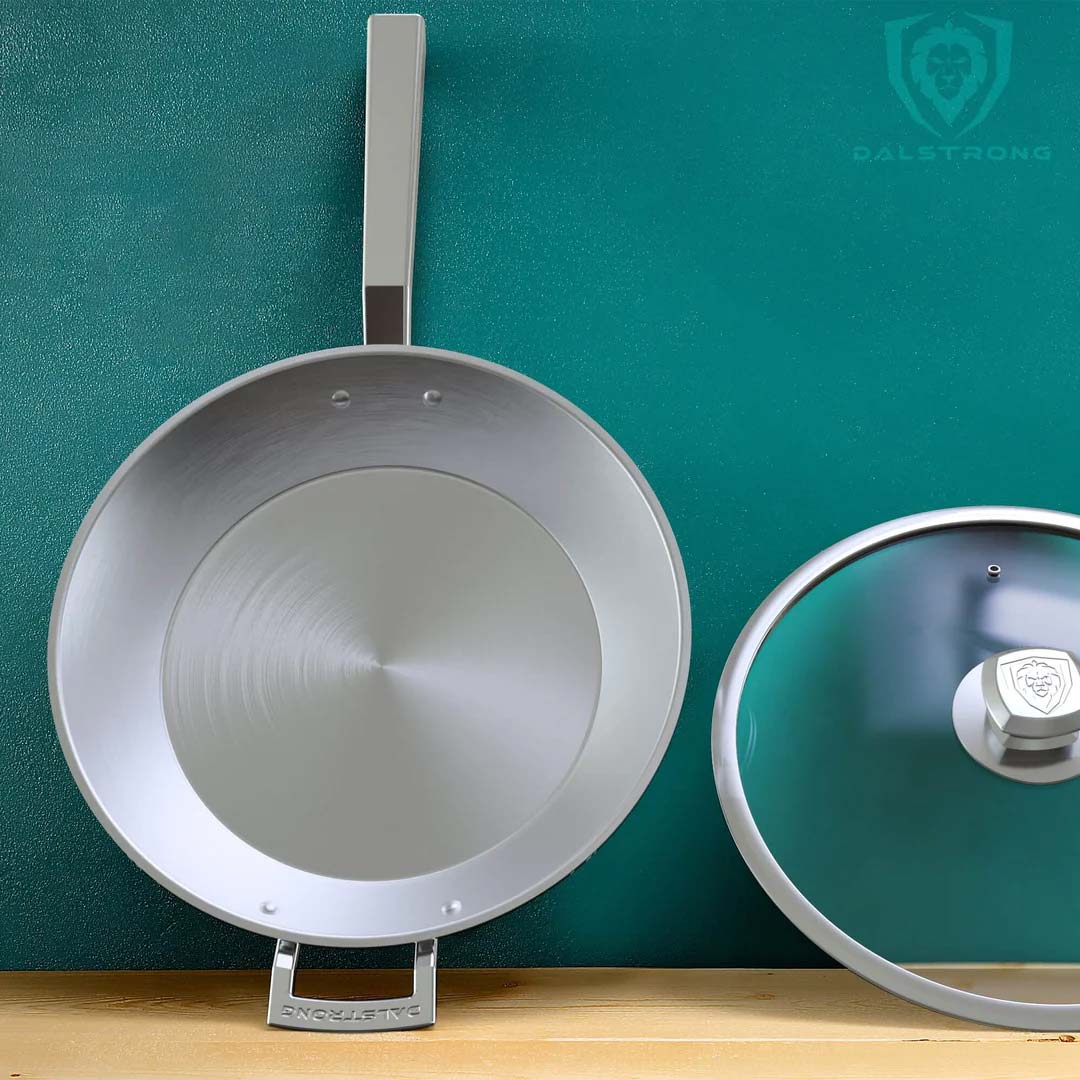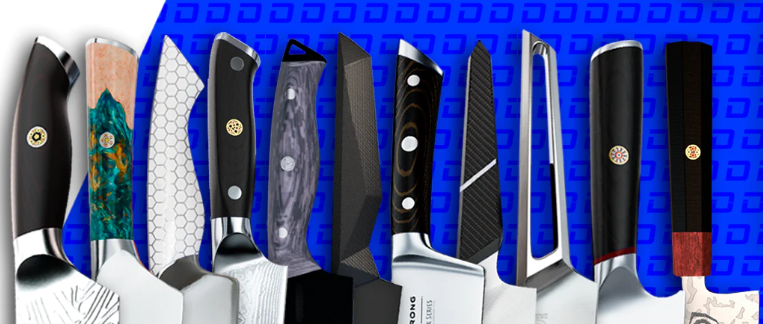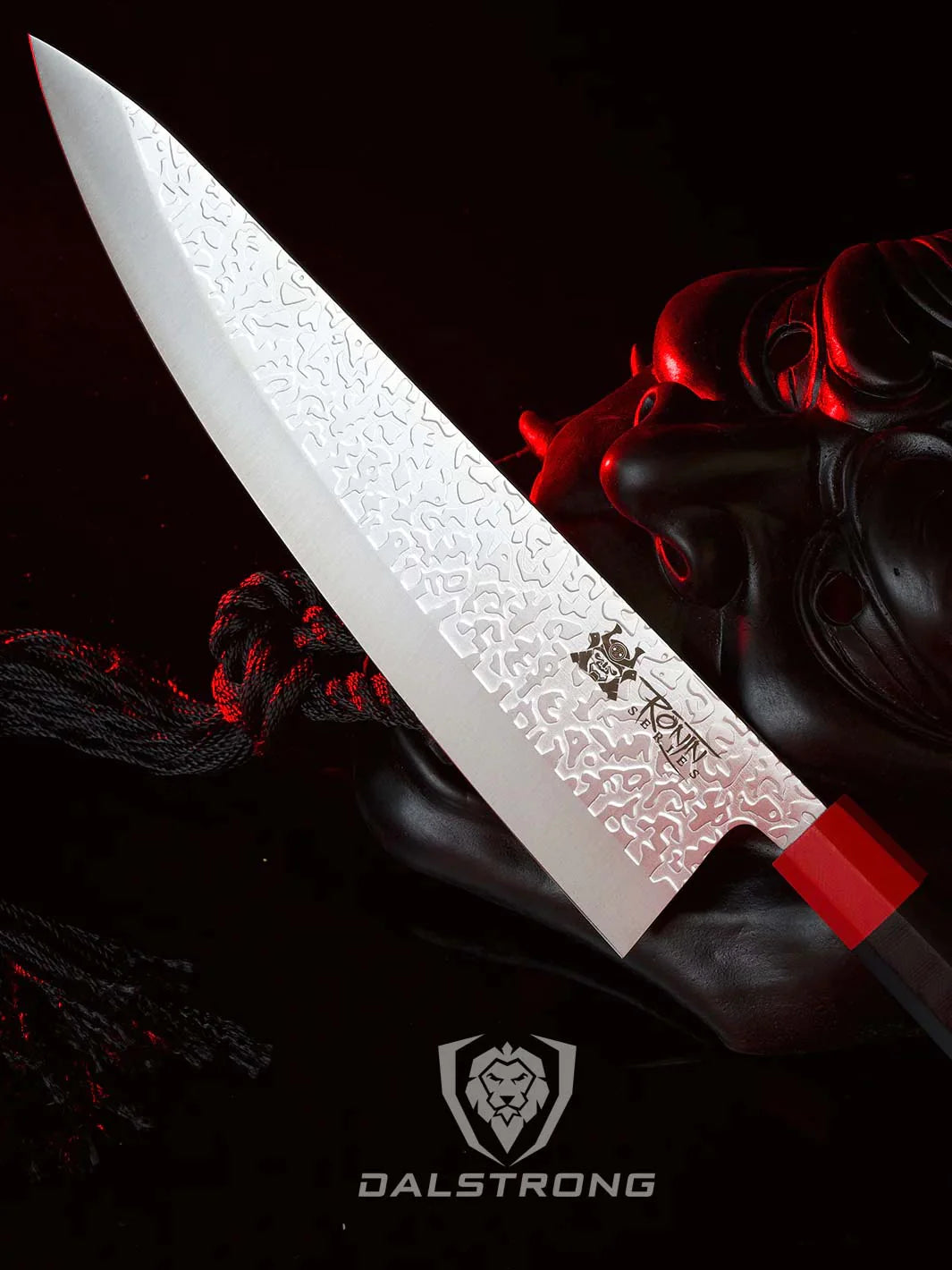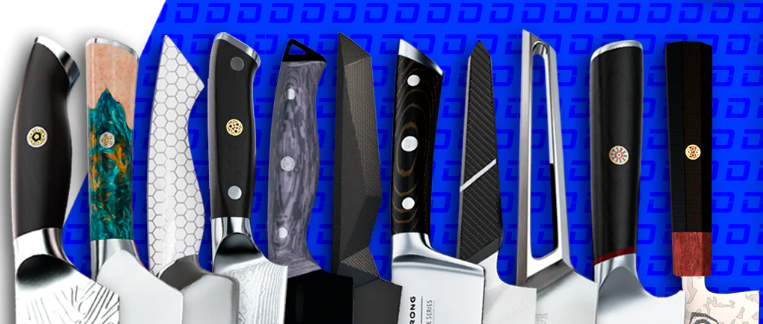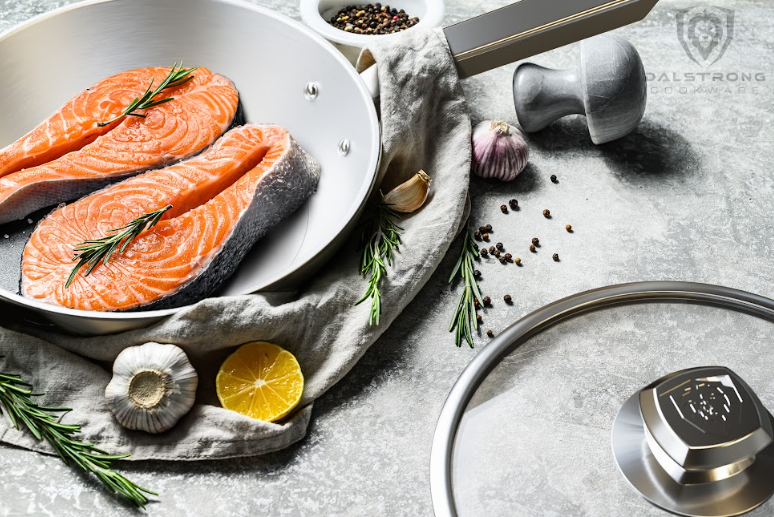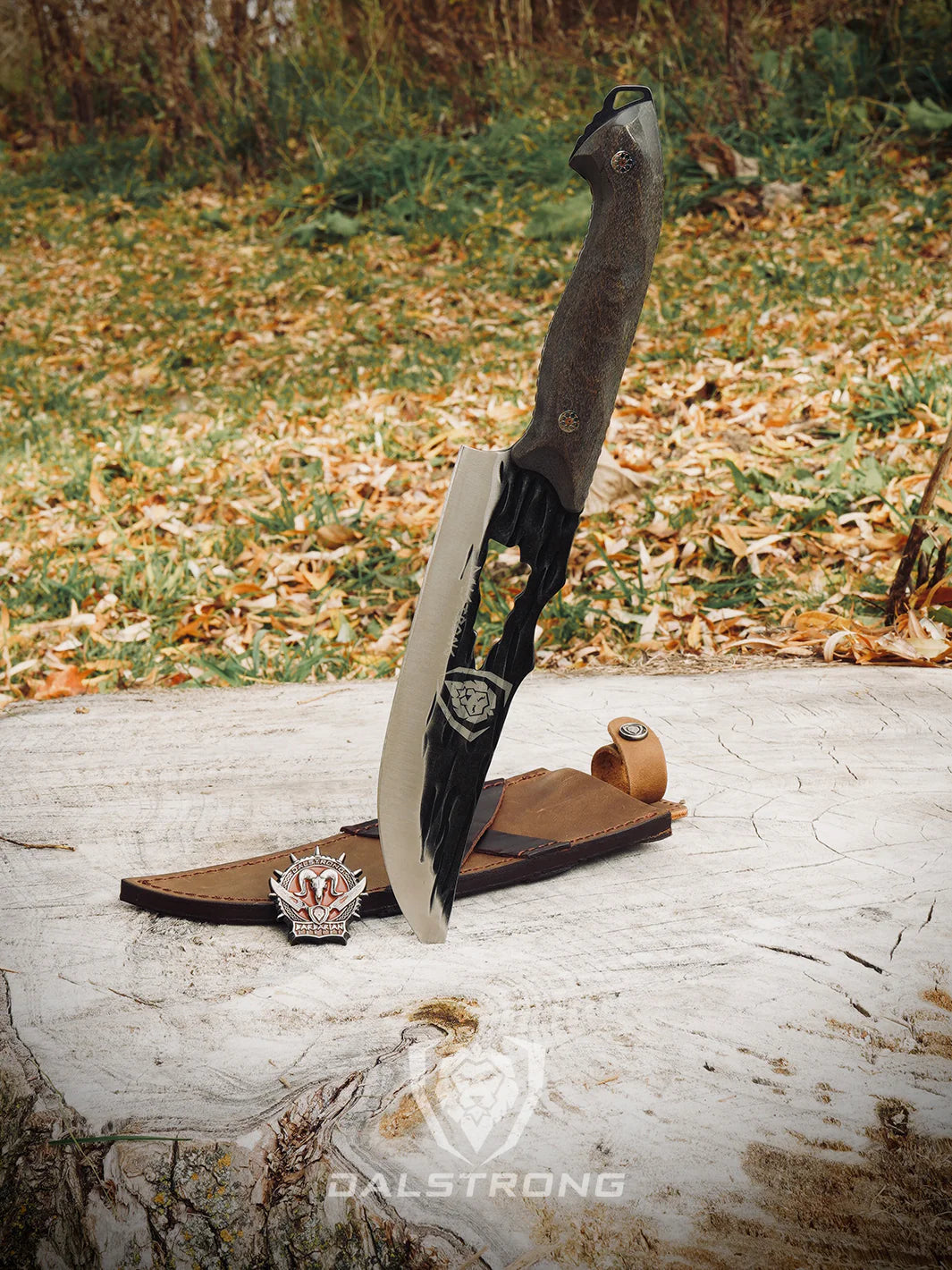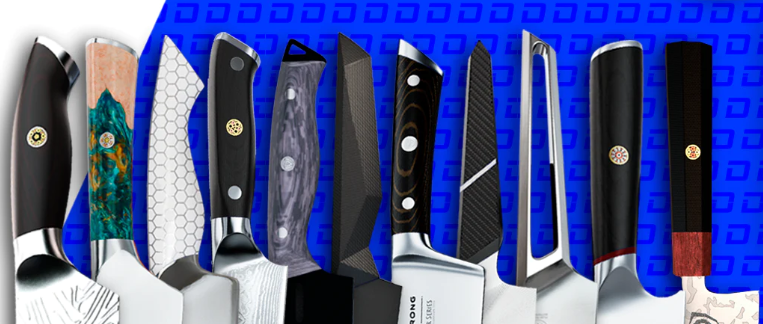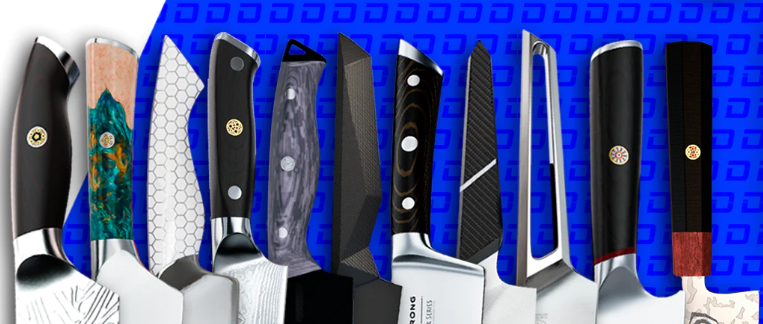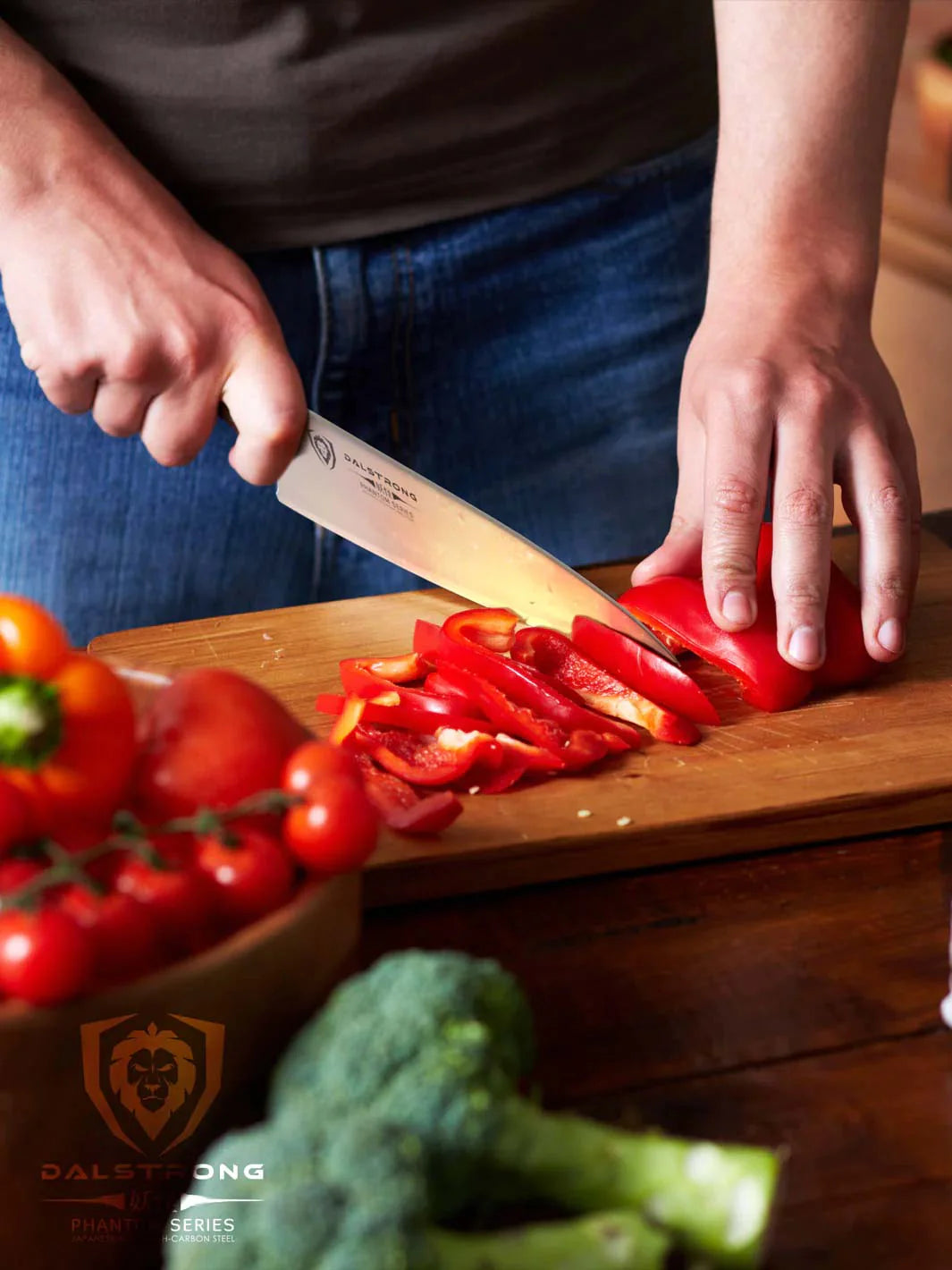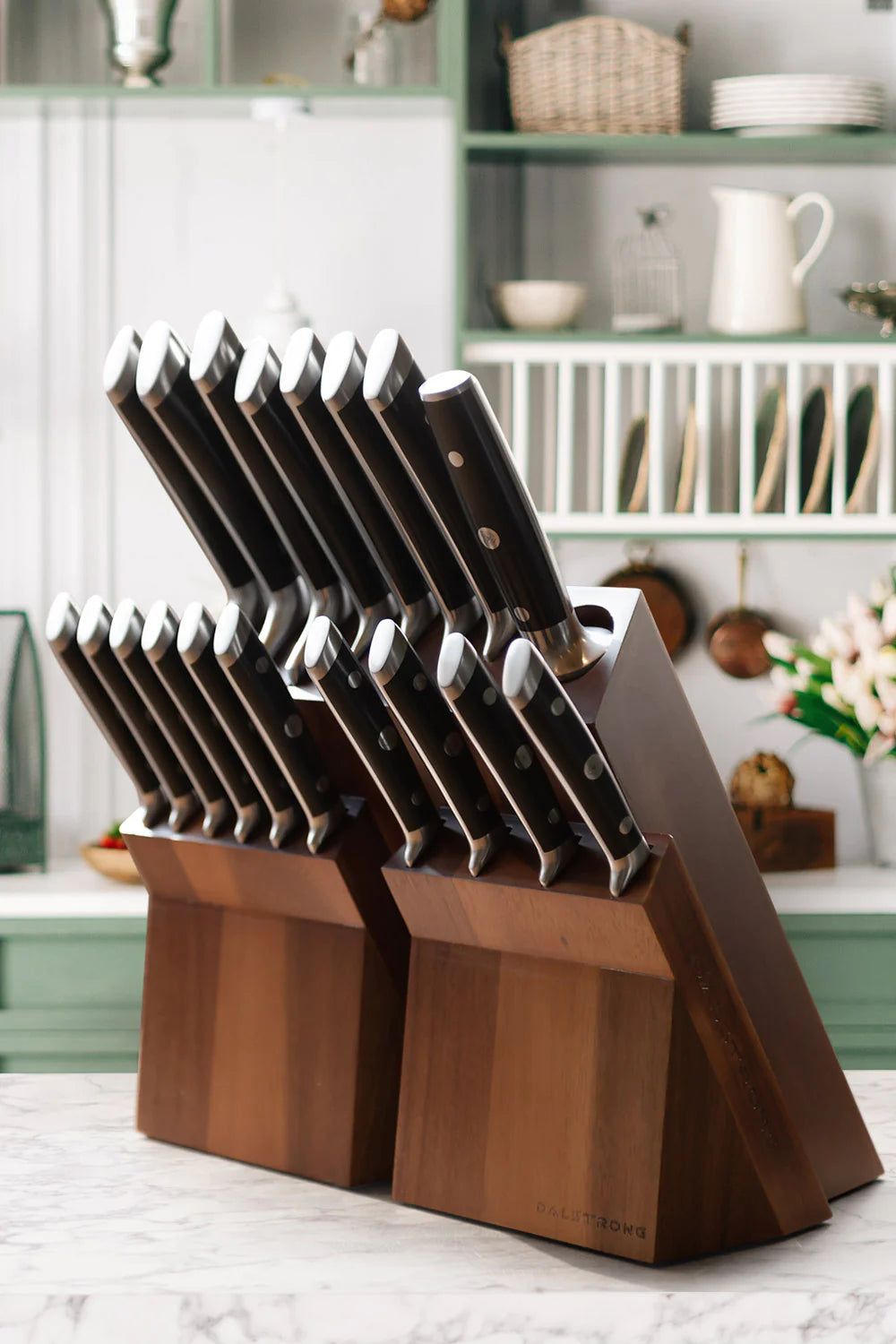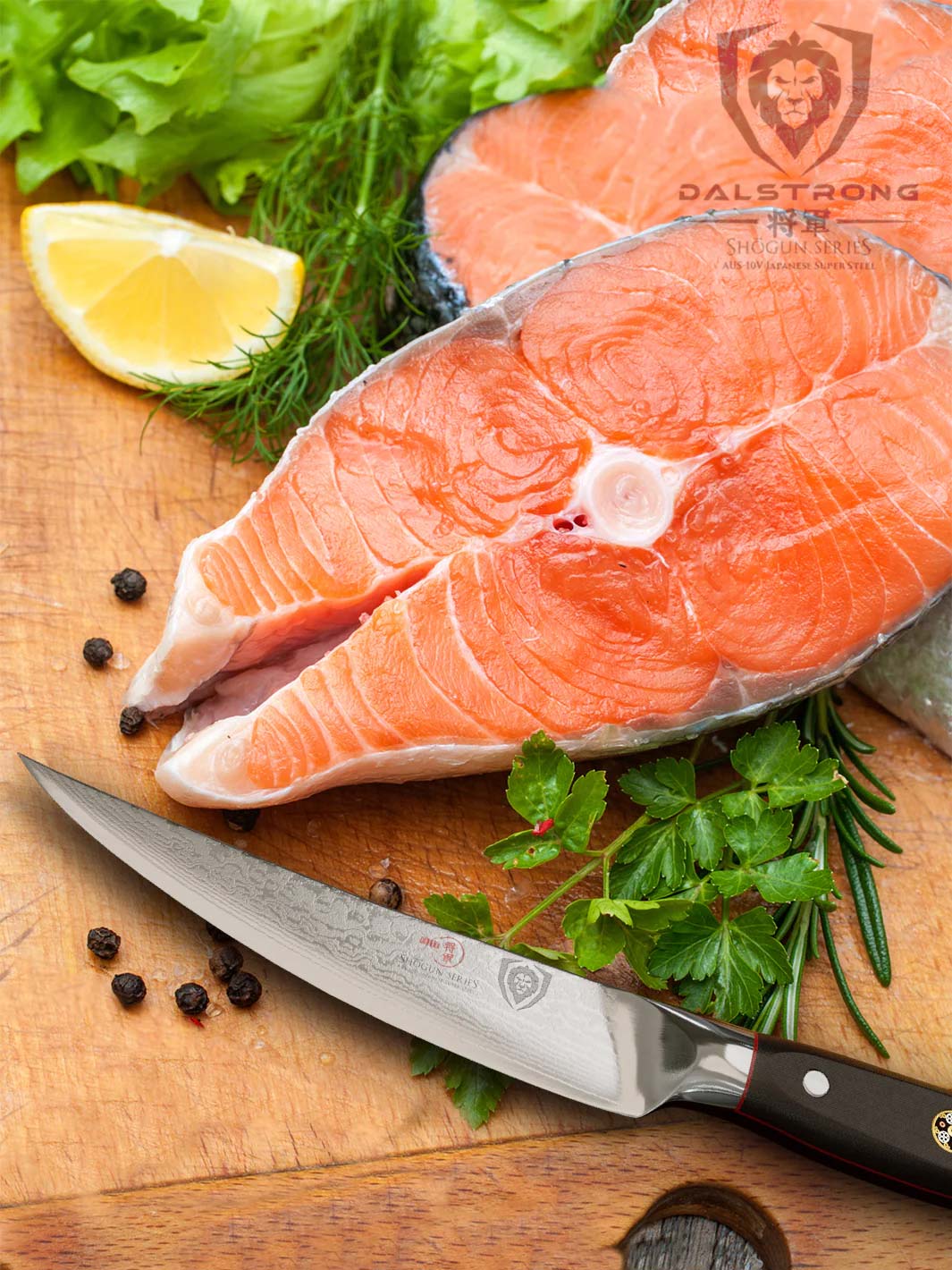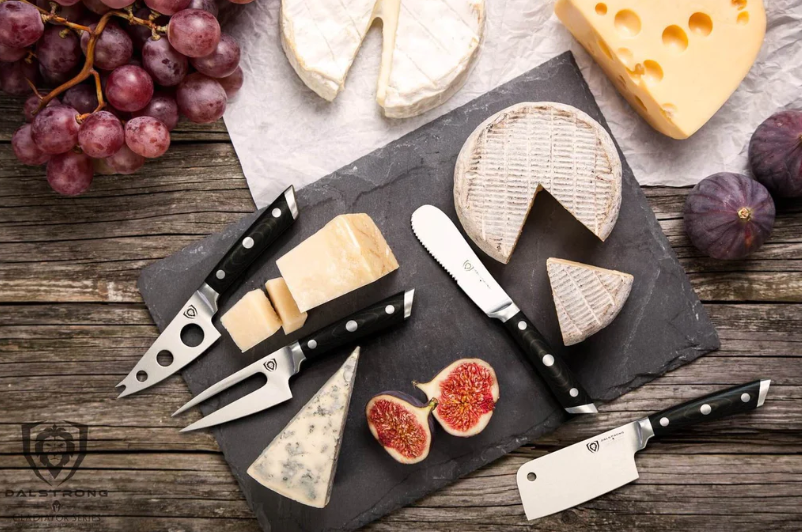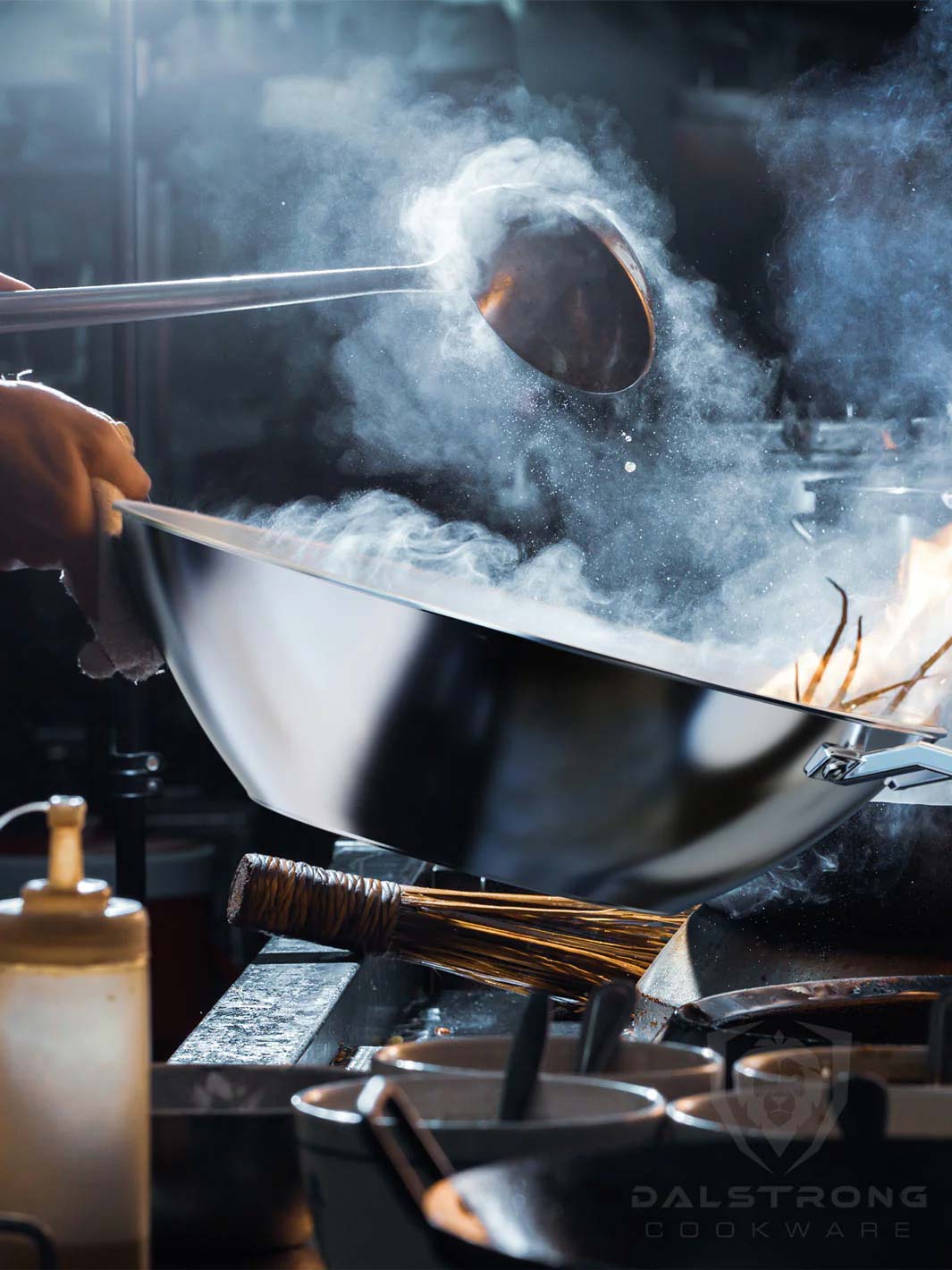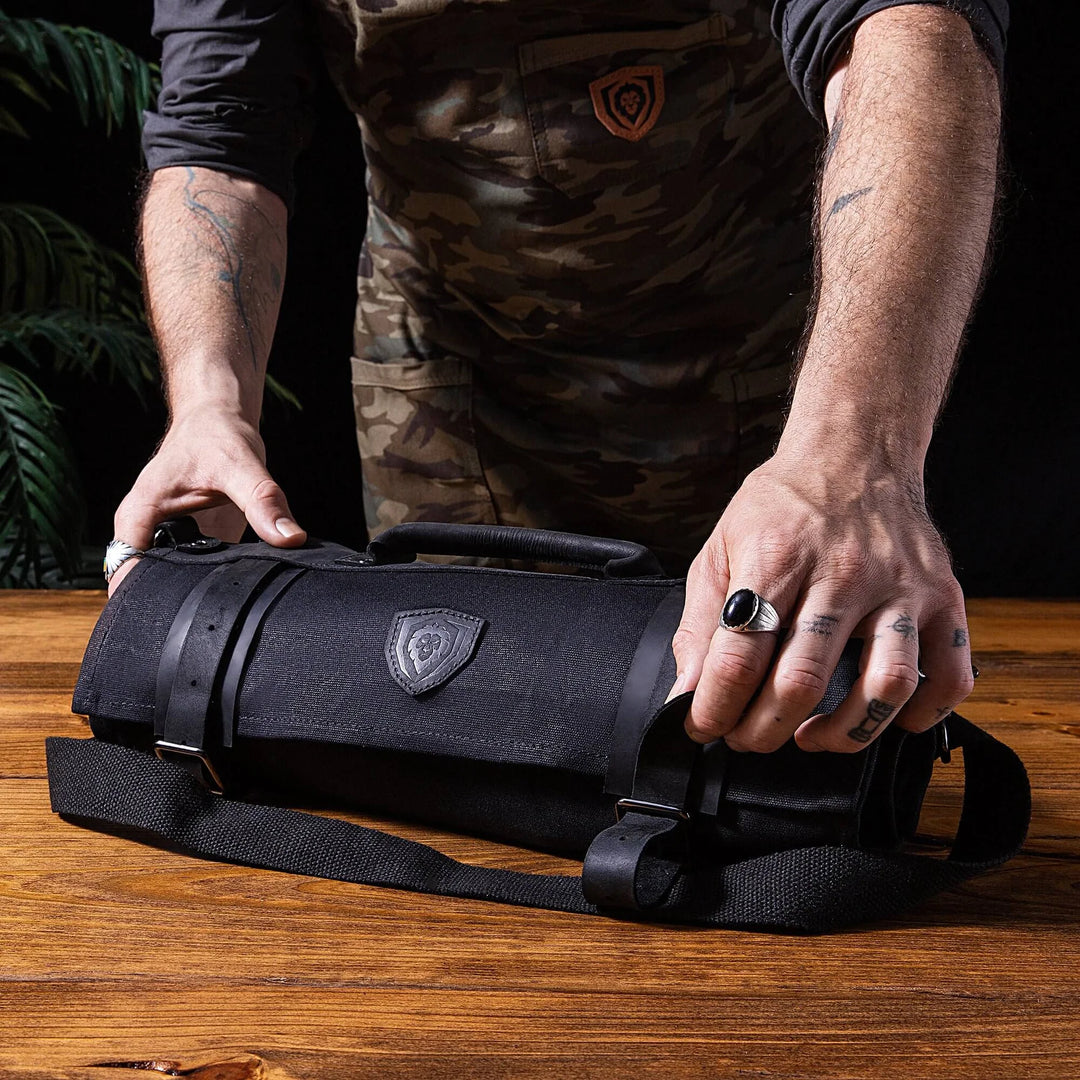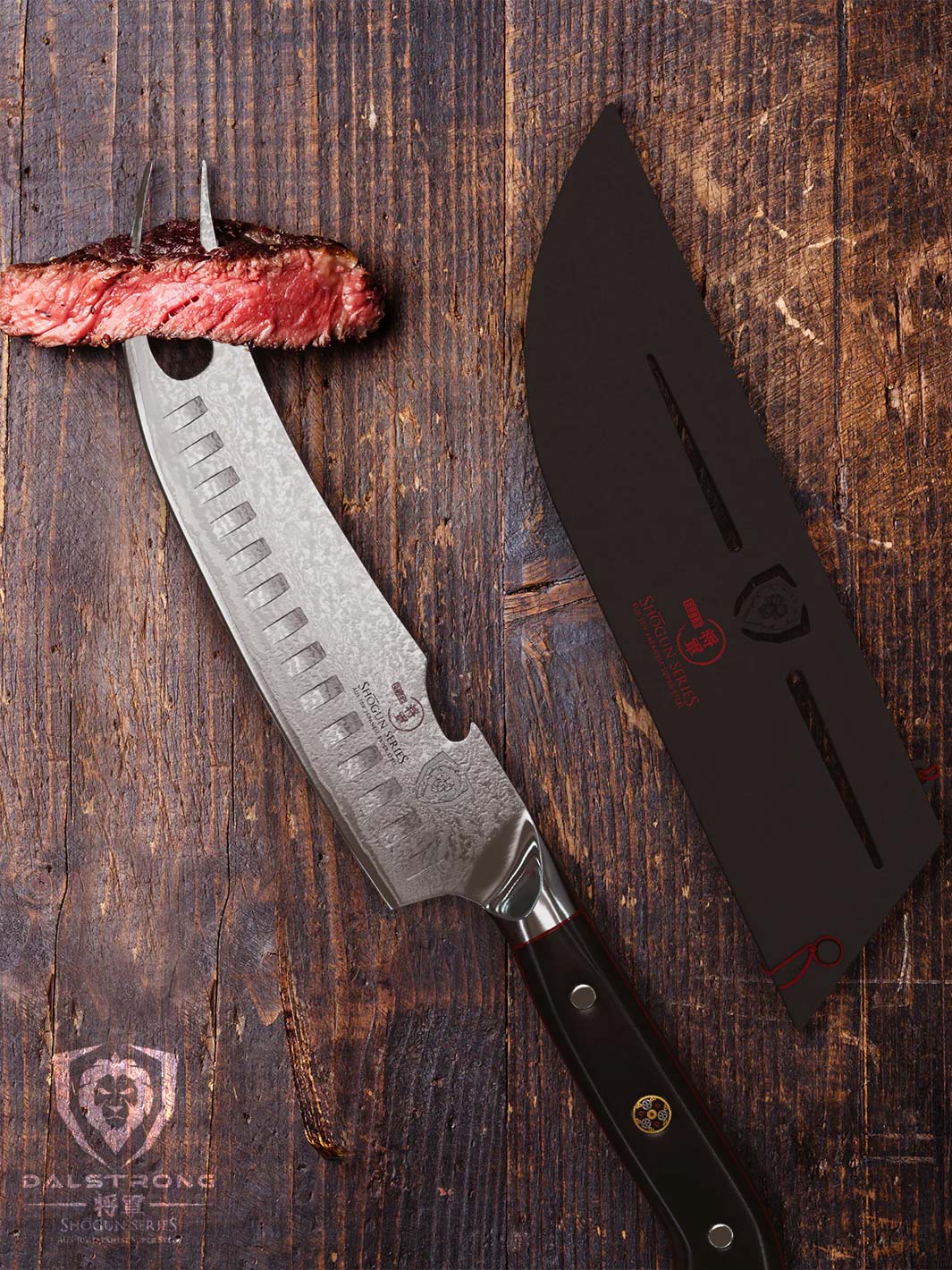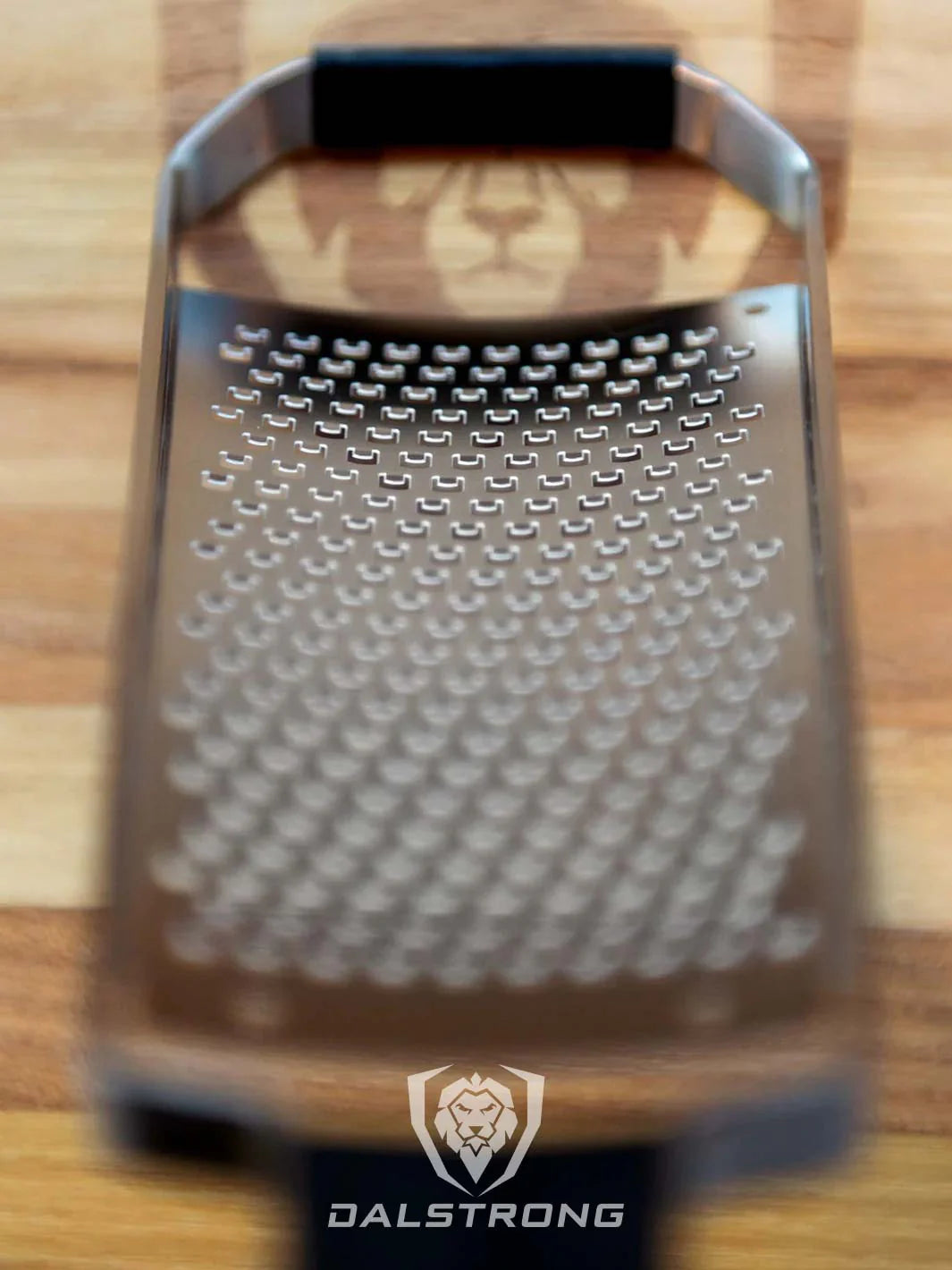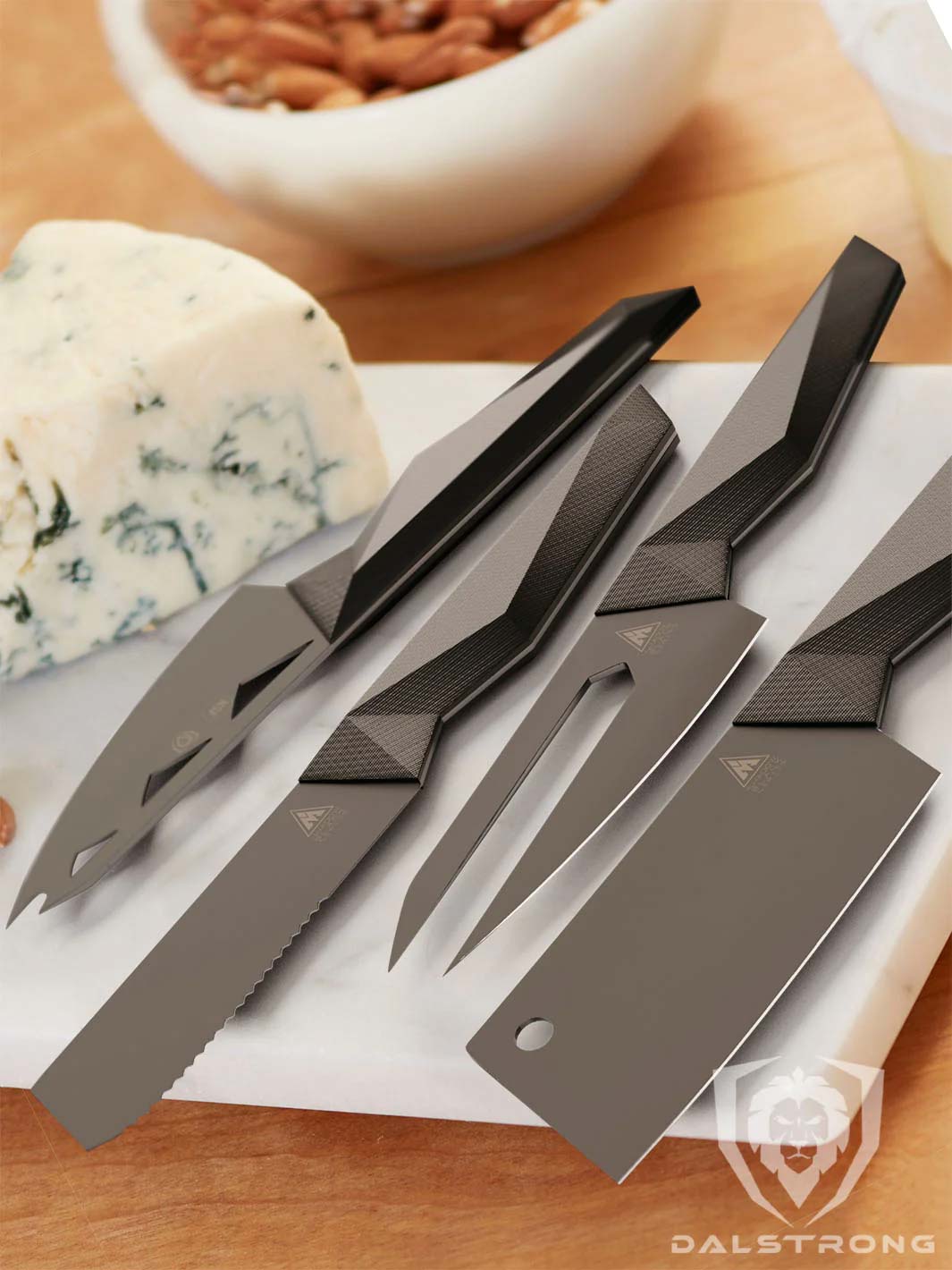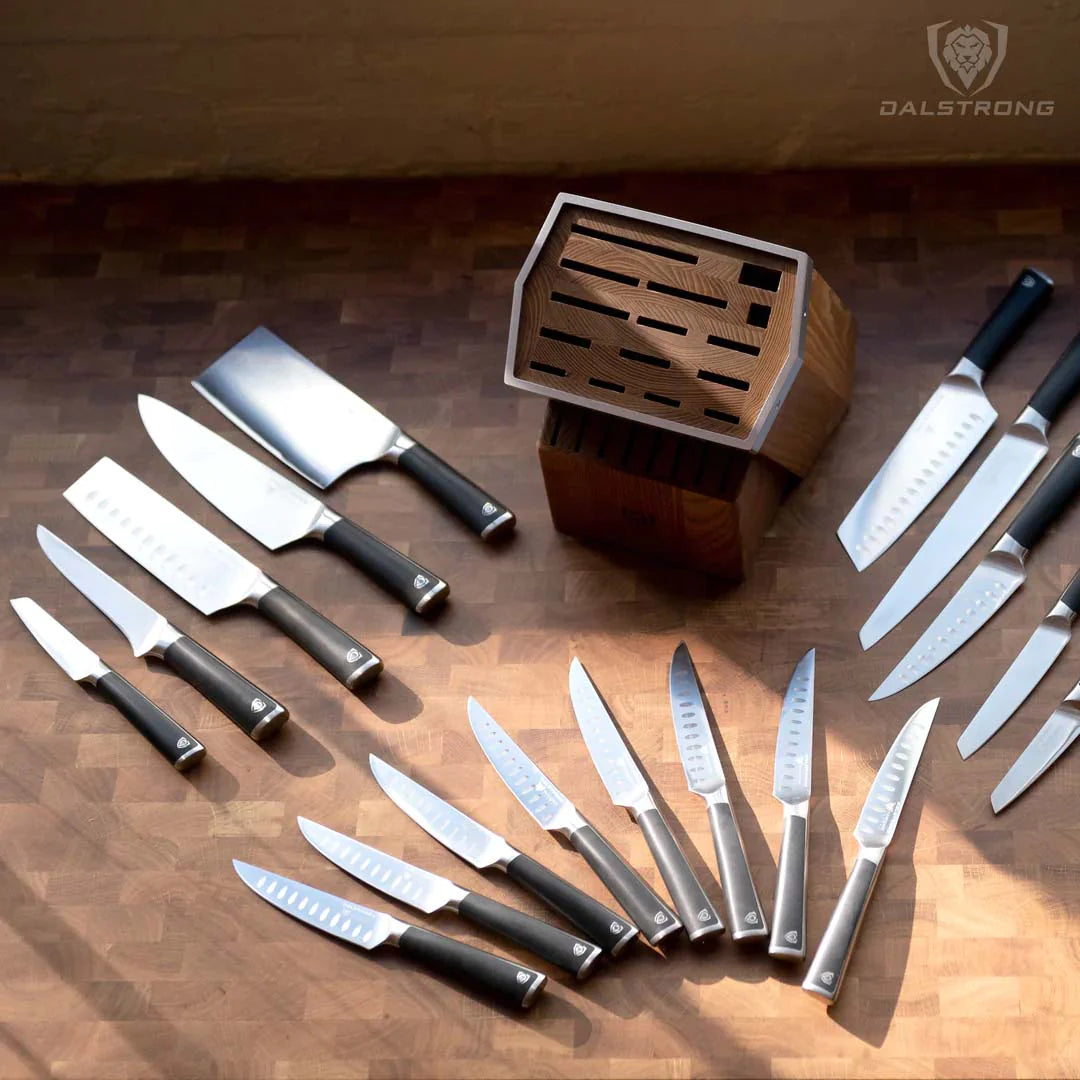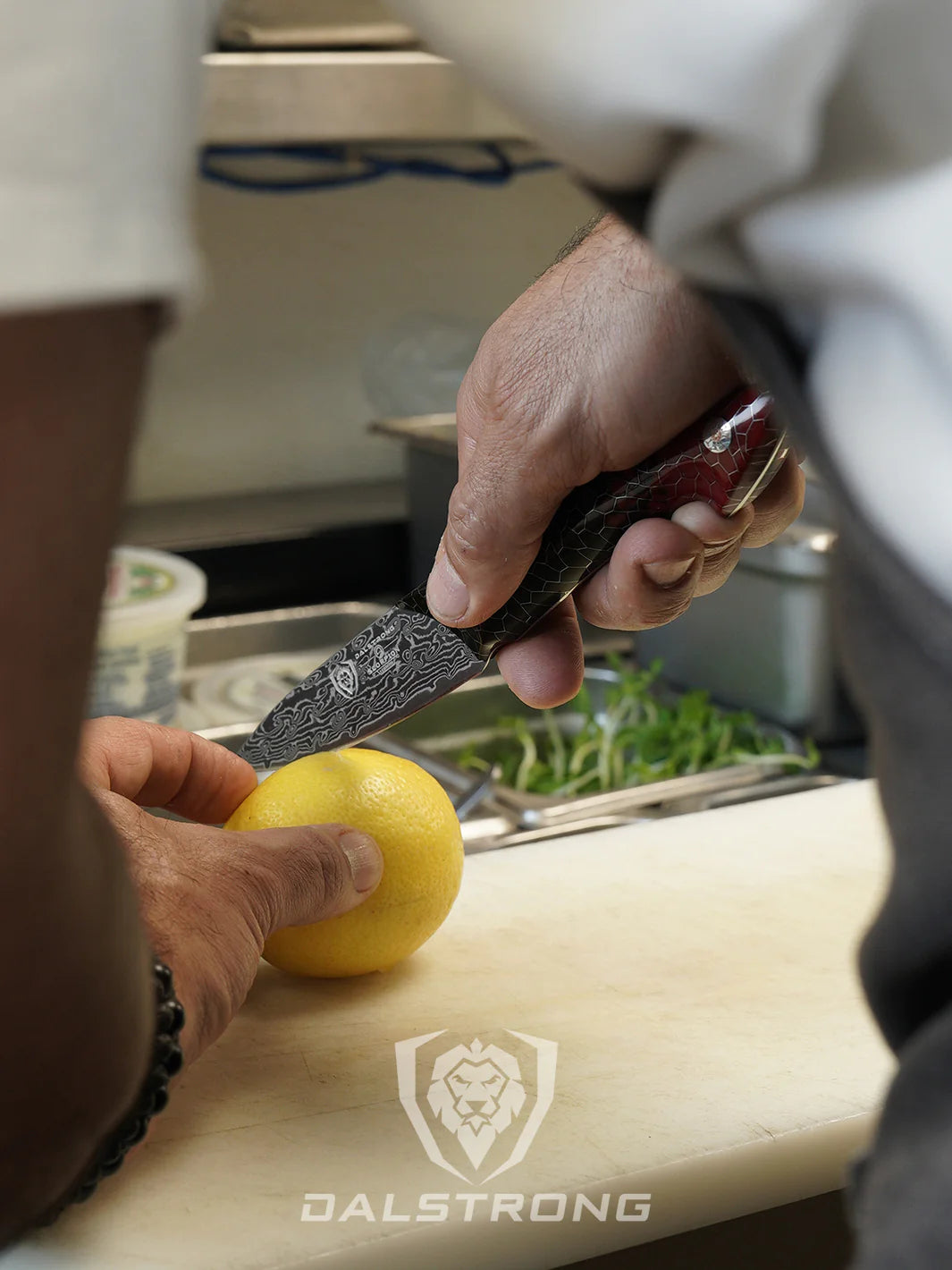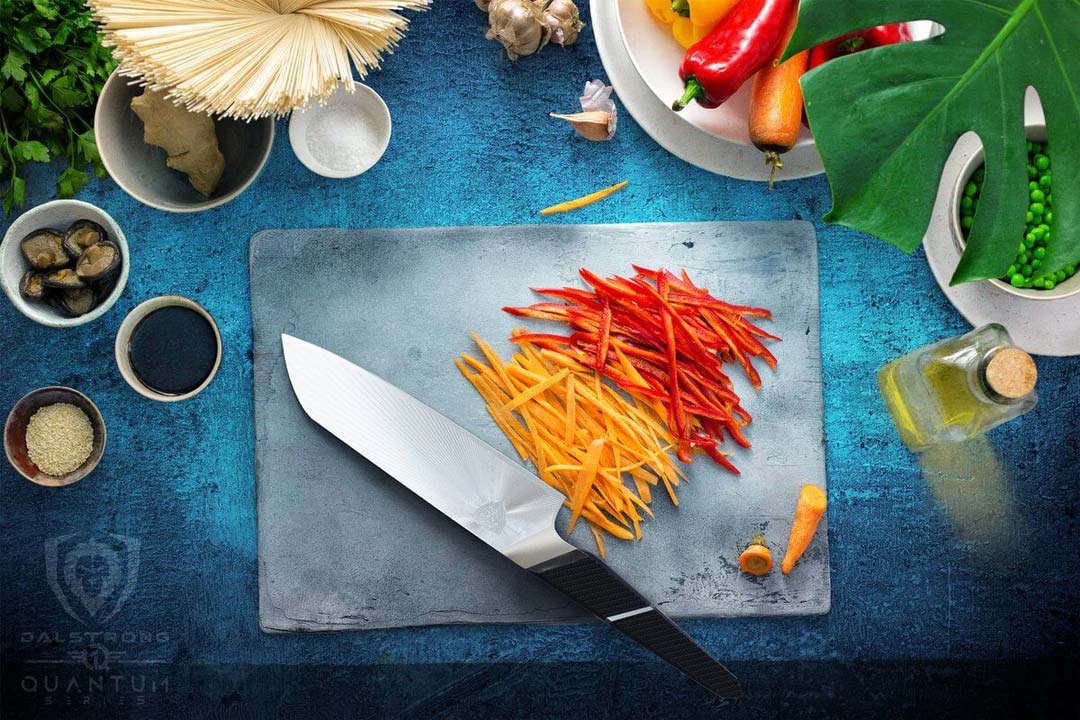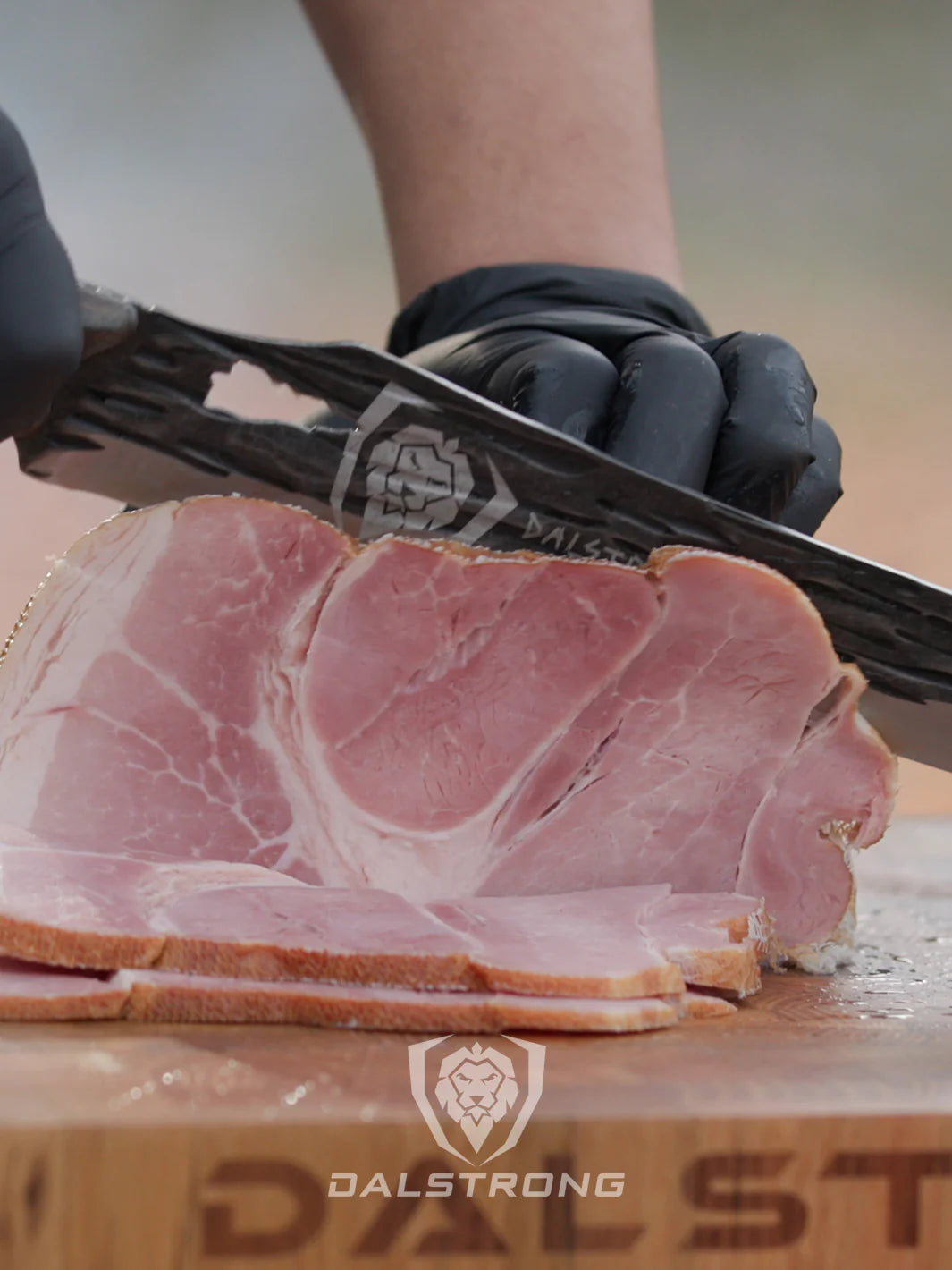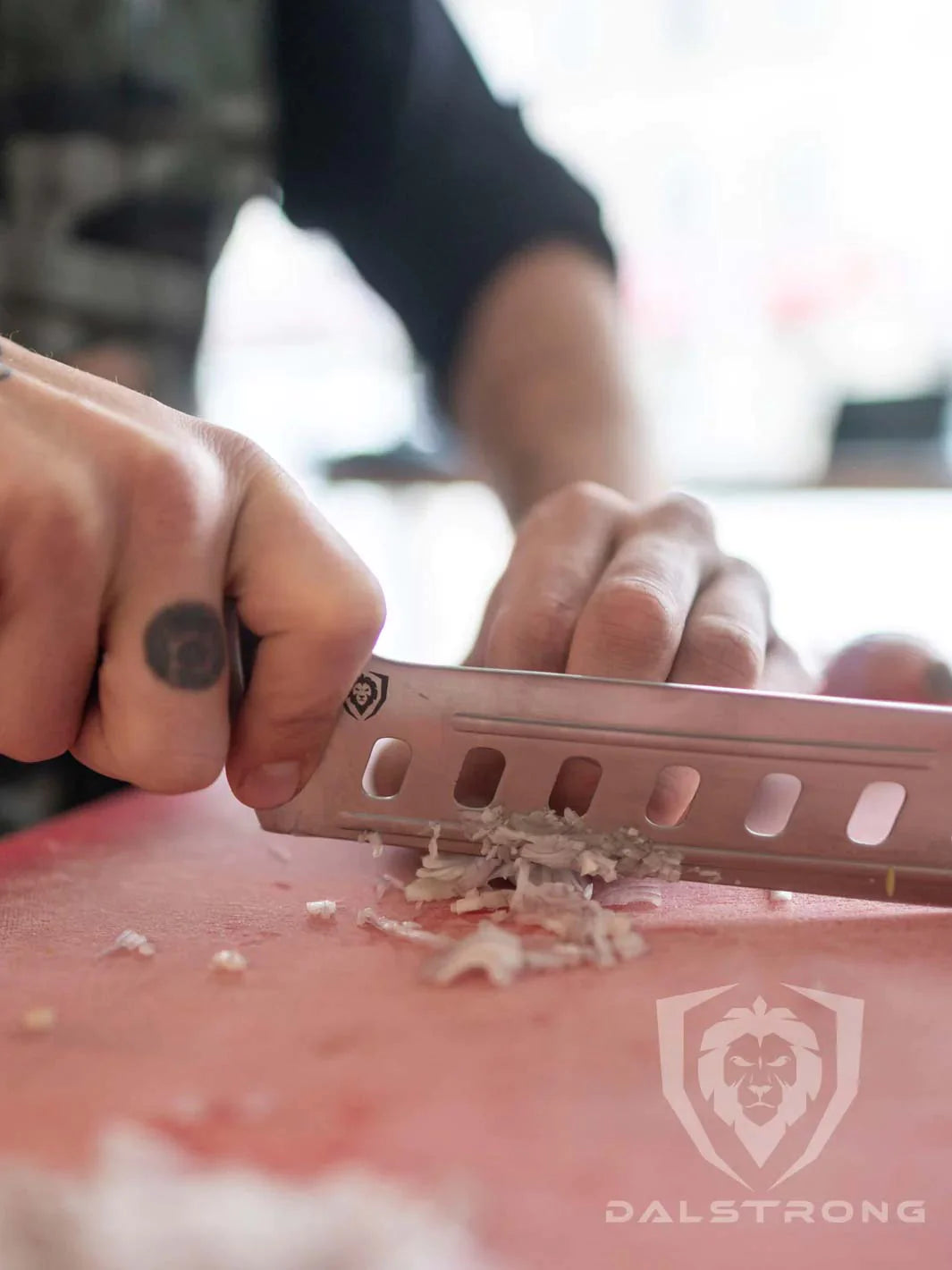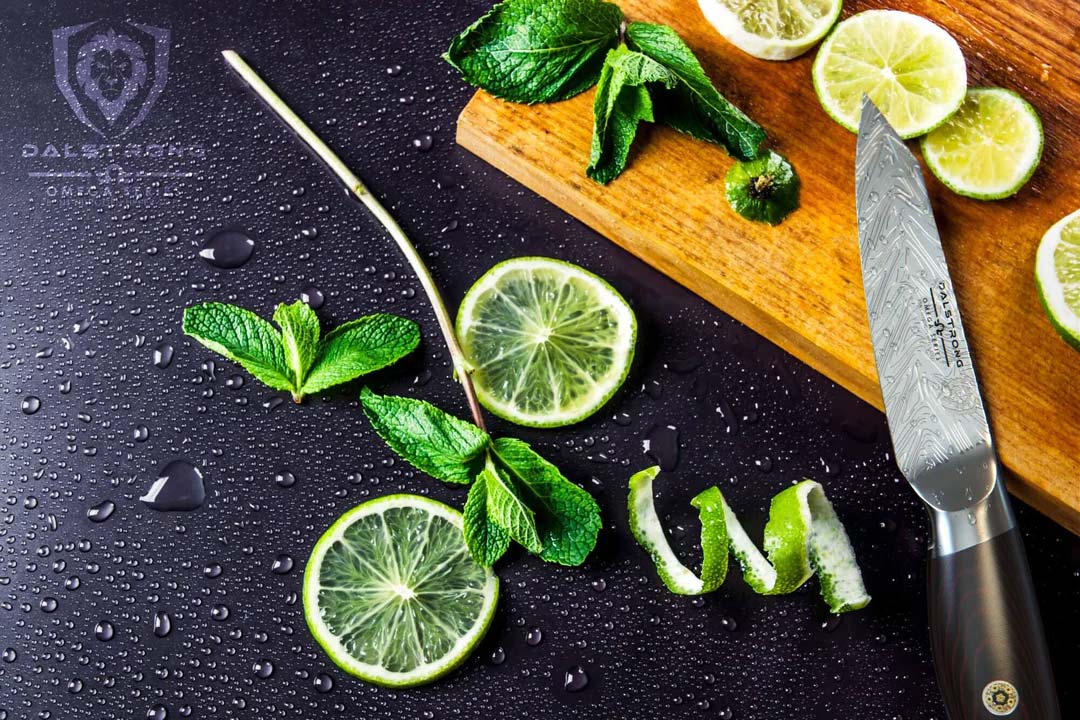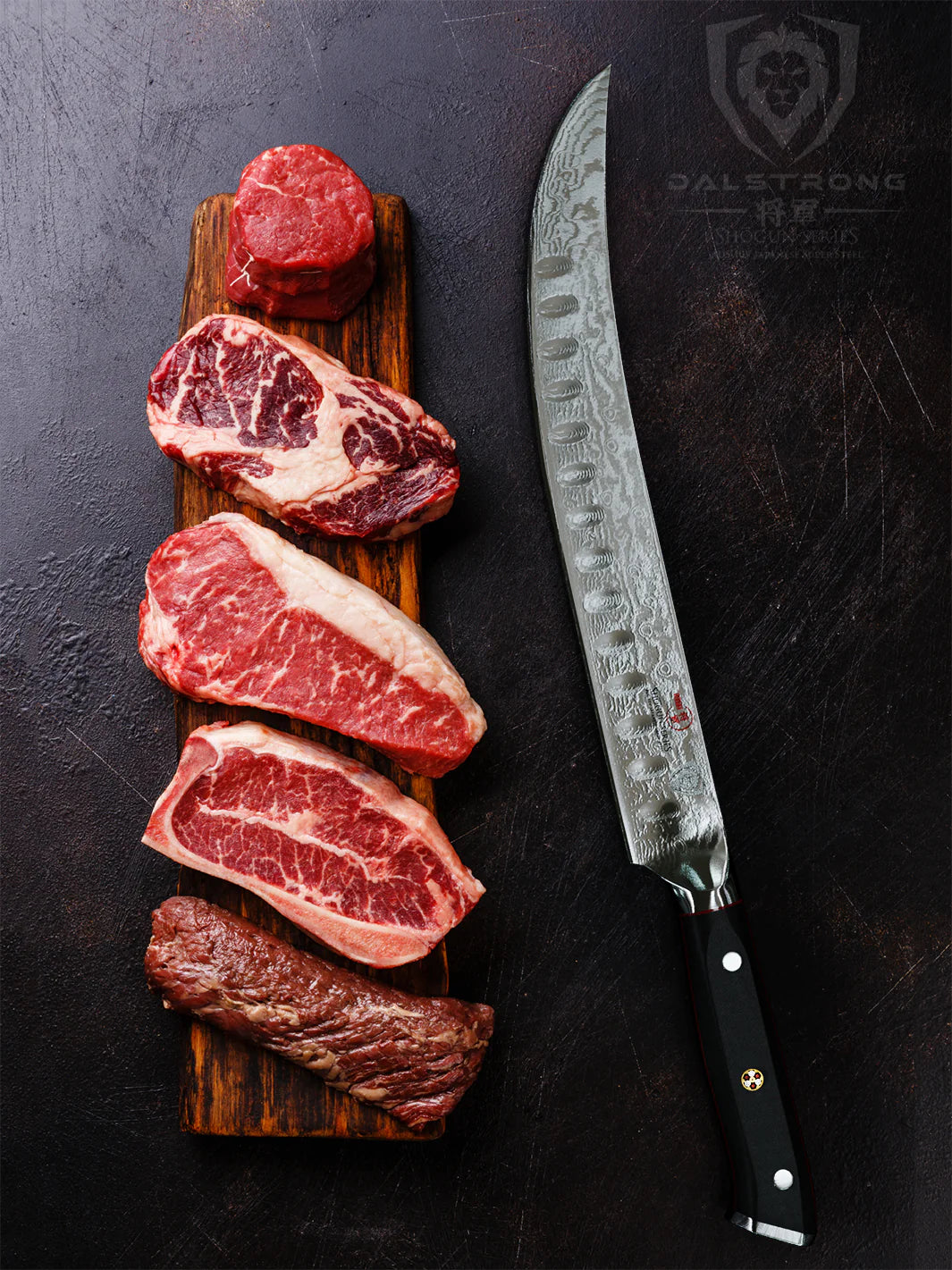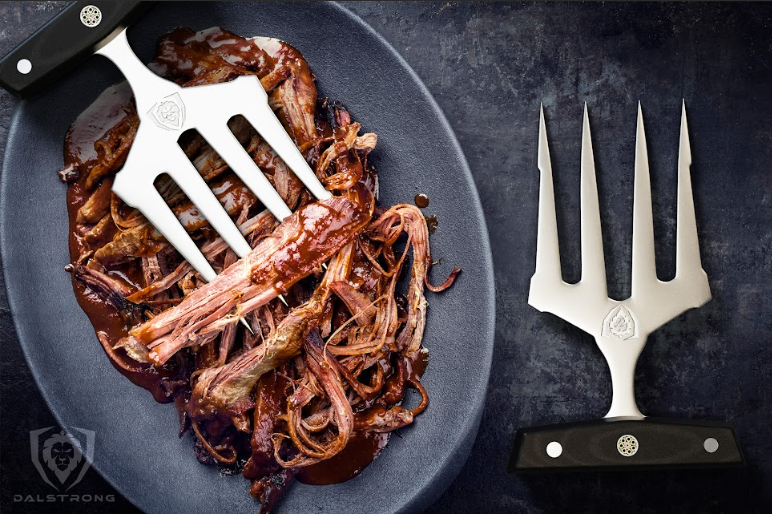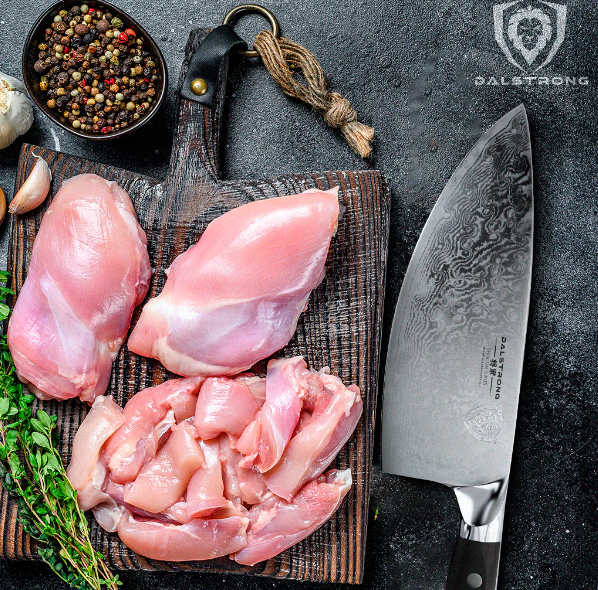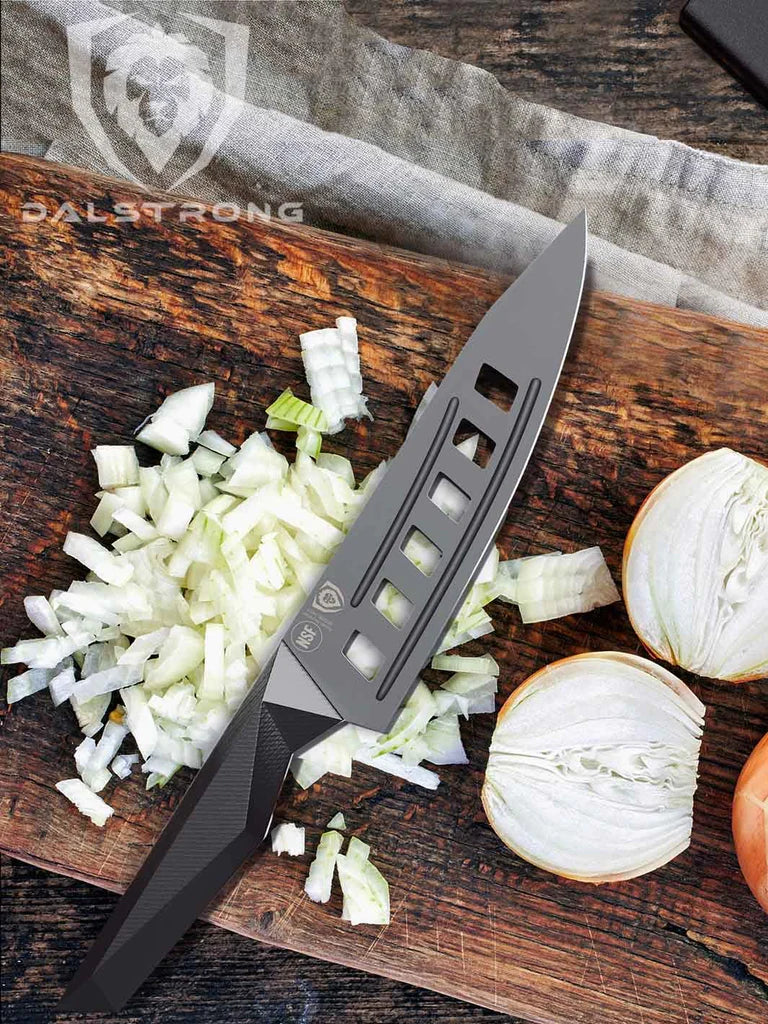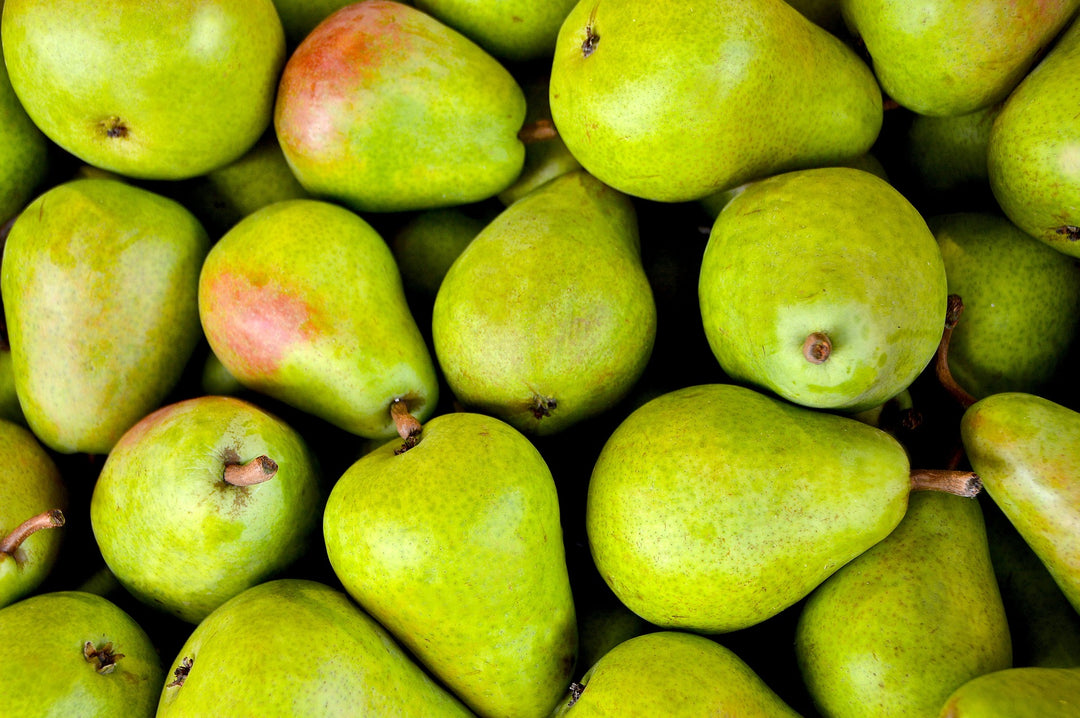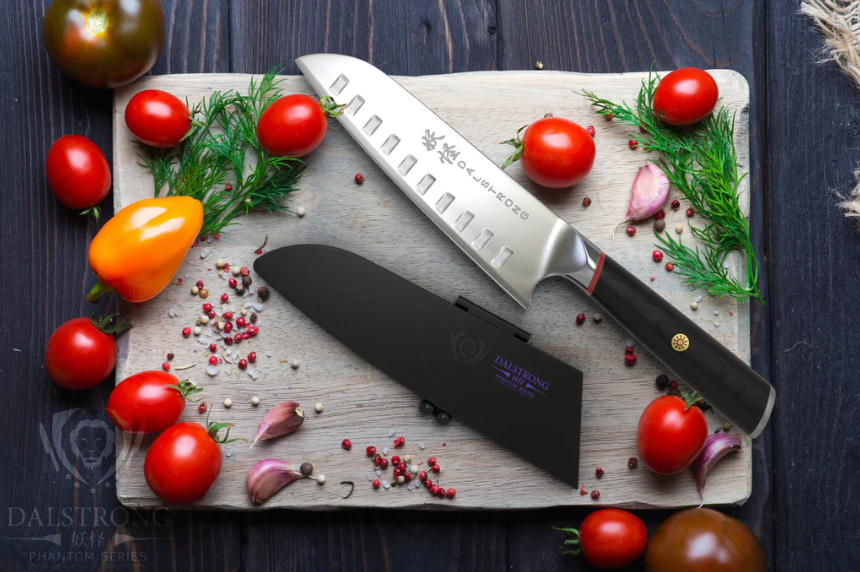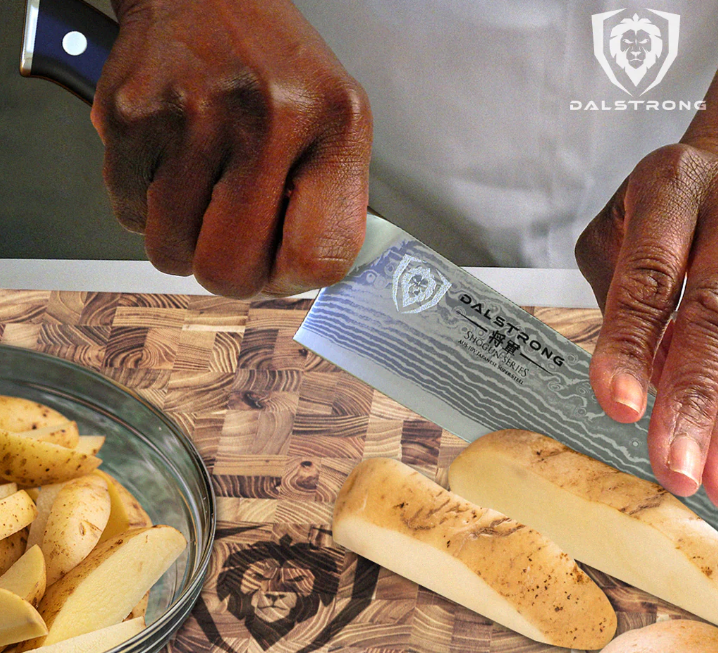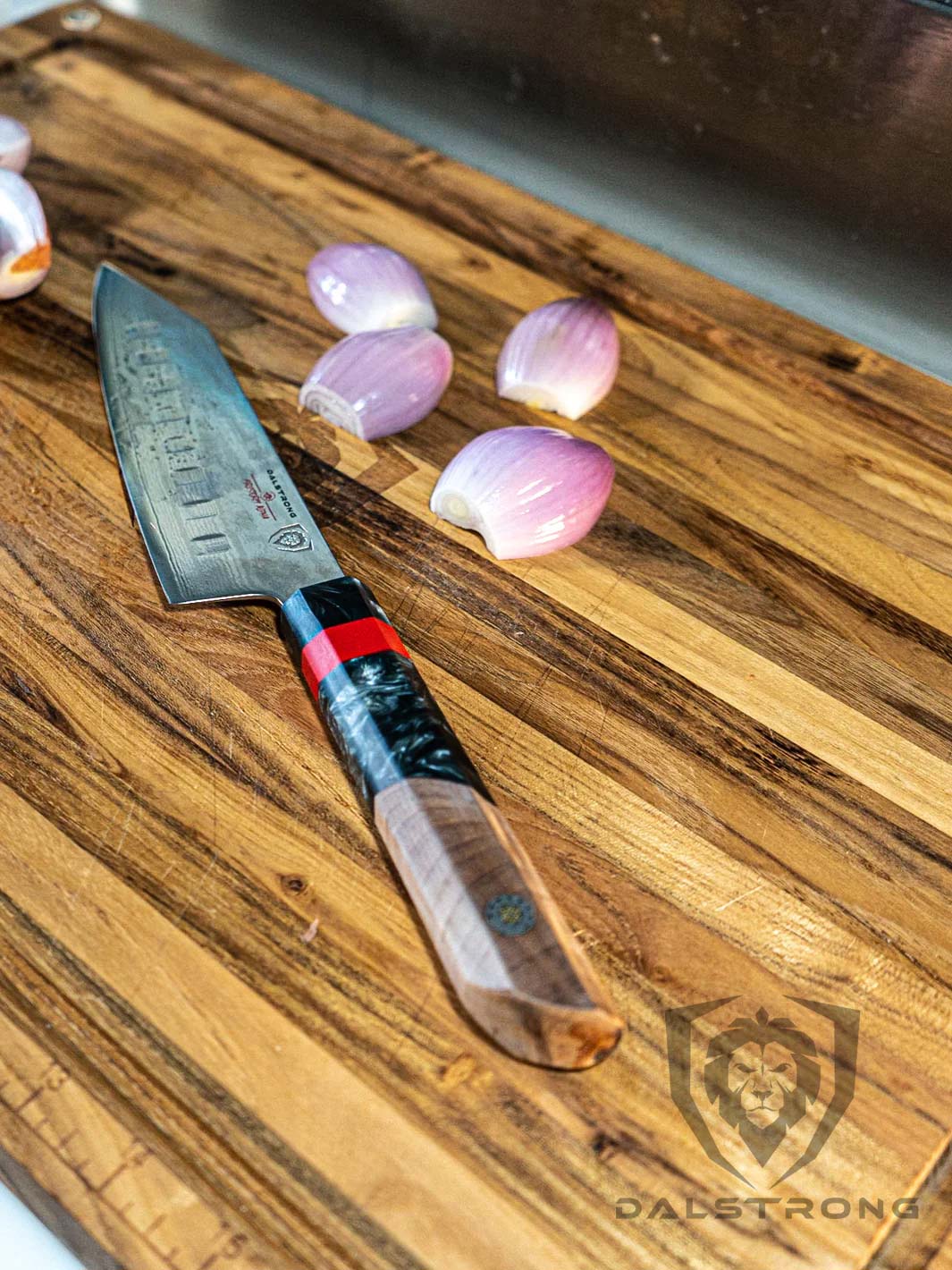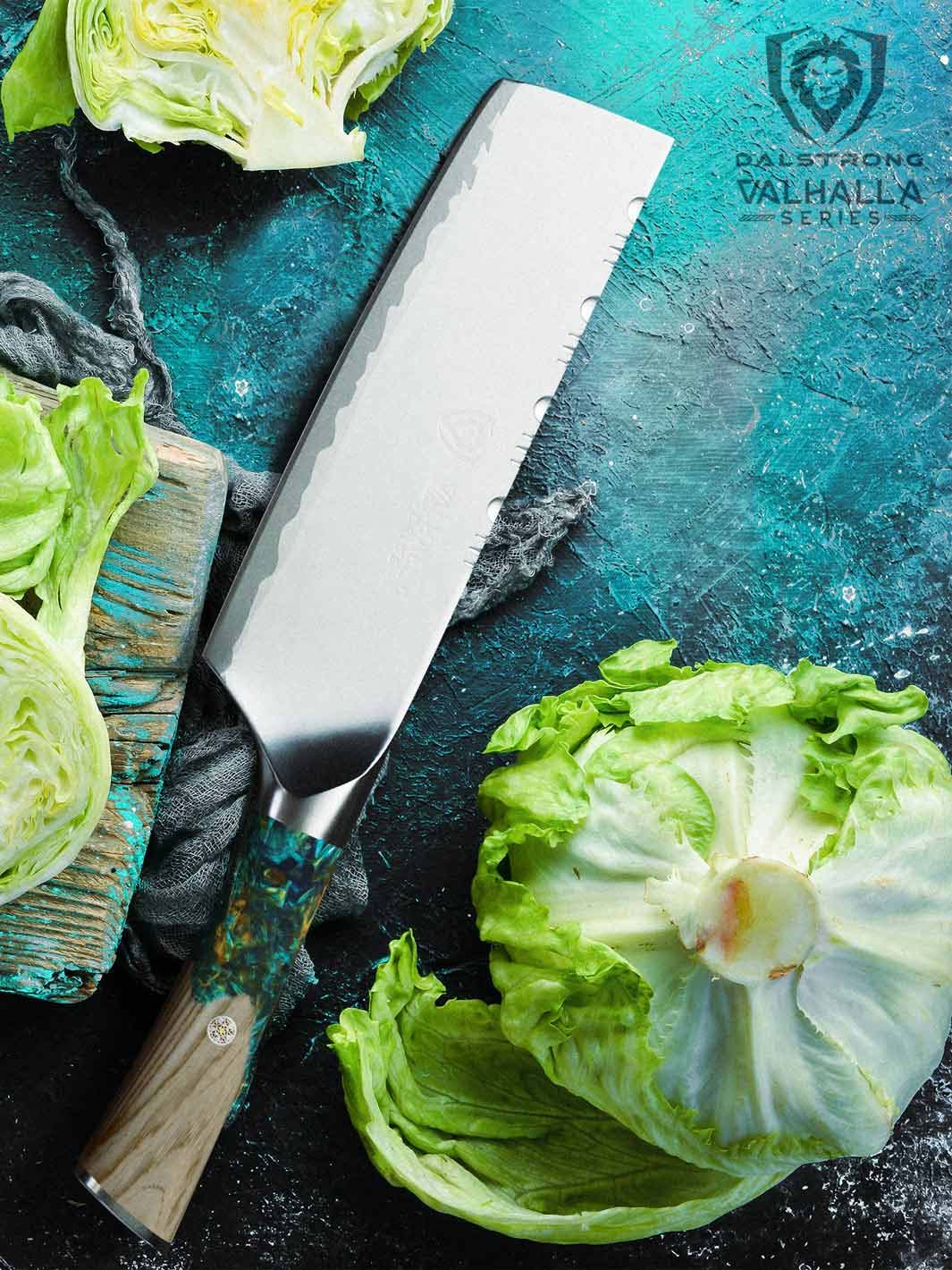Essential Tools To Make A Great Stir Fry
 Dalstrong Phantom Series 4" Paring Knife
Dalstrong Phantom Series 4" Paring Knife
Stir Fry is a very delicious, very healthy, very easy-to-make Chinese recipe that will take any lunch or dinner to the next level. Learn what you need to prepare this noble dish at home.
1. What Is Stir Fry?
 12" Frying Pan Wok ETERNA Non-stick | Oberon Series | Dalstrong ©
12" Frying Pan Wok ETERNA Non-stick | Oberon Series | Dalstrong ©
More than a single recipe, stir fry is a cooking technique where ingredients are stirred and fried in a wok or wok-like pan, using a little bit of oil at very high heat. These ingredients are usually different vegetables and proteins.
Although the list of ingredients in a stir fried dish is, to a point, customizable, there are essential things that have to be there to call it stir fry:
-
Vegetables: Most common ones are broccoli florets, red bell pepper, zucchini, mushrooms and carrots. But the list is pretty much endless: bok choy, baby corn, bean sprouts, onions (yellow or white), sugar snap peas, water chestnut, snow peas…
-
Protein: Even though you have the option to cook an easy vegetable stir fry, real stir fry recipes will accommodate some kind of protein. You have your shrimp stir fry, pork stir fry, easy beef stir fry or my favorite: an easy chicken stir fry recipe. Tofu is a popular choice for a vegetarian or vegan stir fry.
-
Sauce: You’ll probably find a stir fry sauce in the nearest Asian market. I usually go for Teriyaki (or something with similar sauce ingredients like soy sauce, brown sugar, rice vinegar and garlic). You can make your own sauce by combining these and other ingredients like chicken broth, red pepper flakes and fresh ginger. Personally, I used low sodium soy sauce.
-
Oil: Absolutely important in stir fry recipes. You shouldn’t use just any oil though, go for those with a high smoke point like peanut oil, canola oil or another vegetable oil. Extra virgin olive oil, as well as toasted sesame oil, delicious as they are, do not constitute good oils for stir fry because of their low smoke point. A drizzle of sesame oil on an already plated stir fry adds a nice touch of flavor.
-
Rice or noodles: Or better yet: rice noodles (ramen noodles are a popular choice).
-
Garnish: Green onions, sesame seeds, peanuts or cilantro.
What is the difference between stir fry and sauteing?
Stir fry uses a higher heat than sauteing, and thus the ingredients are ready in a few minutes. Food needs to be stirred constantly (duh) in stir fried dishes; while sauteing involves less motion, and also less oil than stir fry. Also, stir fry should be prepared using a wok; and sauteing is usually done in a sauté pan. Homemade stir fry is a fast and easy way to make a healthy meal. You can make a lean, high-protein meal with these 7 delicious vegetables that are great for weight loss by tossing them in a wok.2. Easy Recipe For Stir Fry
 Dalstrong Chef's Kitchen Apron - Sous Team 6"
Dalstrong Chef's Kitchen Apron - Sous Team 6"
Pork chops. Juicy cashew chicken. Ground beef. Pasta recipes. They are all great, but you’ve done it a thousand times. You’ve also tried all of the other Asian recipes like Lo Mein, Pad Thai, fried rice and what not. It’s time you try something else!
You need to set aside some meal prep time, but stir fry recipes are fairly easy and quick once you chop all your veggies.
- Buy or prepare your own sauce for stir fry with soy sauce, garlic, brown sugar and rice wine vinegar.
- Marinate the meat. If you want to go pro, use corn starch, this is a Chinese marinating technique that seals the protein and makes it nice and crispy. Otherwise, you can use the same sauce you have for stir frying or just salt and pepper.
- Chop chop chop. Use a suitable, sharp knife to cut both the vegetables and the protein into small pieces of the same size. It is extra important that stir fry veggies and all ingredients are consistently chopped into the same (or similar) size. This also applies to herbs and aromatics if you’re adding any.
- Add a tablespoon of peanut oil or any other suitable oil to a wok or skillet over medium-high heat.
- When the oil is hot, add the protein first. Stir constantly until it is crispy and tender.
- Next, add the aromatics, but you should only stir them for a little bit until you smell their fragrance (this should take about a minute).
- Add broccoli and mushrooms first; then softer vegetables like bell pepper or bean sprouts. Again, stir them for about a minute or two.
- Coat the vegetables and the chicken (or protein) generously with the stir fry sauce.
- Ready! Remove from the heat and serve with sesame seeds, green onions or your favorite garnish, as well as a side of rice or noodles.
3. Tools And Cookware You Need To Make Stir Fry

A wok: a traditional Chinese wok is deep and has high sides, which allows for proper stirring while keeping all ingredients inside. A wok skillet shares these same characteristics, but offers a flat bottom instead, which makes it compatible with electric or induction stoves. Stir Fry is based on the action of stirring, so having cookware that makes this possible and easier is essential.
Wok alternative: not everyone has a wok. You can still make stir fry using a sauté pan, a deep frying pan or a stainless steel skillet. The results can still be delicious if you follow all the tips.
A sharp knife: you will need a suitable knife for chopping the aromatics and cutting the veggies. A Chinese cleaver, a Santoku knife or a Nakiri knife are ideal choices; however, a chef’s knife is also up to the task (up to most tasks, actually) and it’s also perfect for cutting meat like chicken, whether it’s for stir fry or any chicken recipes.
A cutting board: for doing meal prep. Cutting the ingredients is what takes the most time in a stir fry recipe; so make sure you have a comfortable set up for doing so. We recommend wooden cutting boards; and maybe using different ones for vegetables and meat, when possible.
A spatula: As I said too many times before, movement is the essence of a stir fry. Ingredients are supposed to be constantly moving around the wok, and a spatula can be a tremendous help here. Chinese restaurants use wok spatulas, but fish spatulas work great for stir frying too.
4. Recommended Dalstrong Products
1. 12" Frying Pan Wok | ETERNA Non-stick | Oberon Series
The number one thing that will enhance your stir fry experience is a wok pan; and the perfect wok pan for the job is this 12" Oberon Series pan with premium nonstick coating, a large cooking area and excellent heat distribution.
PROS:
- The ETERNA non-stick has been rated as the world's most durable.
- 3-layer aluminum core for perfect conductivity.
- Medium weight for functionality and maneuverability.
- The angled handle lets you master the pan with a secure and comfortable grip.
- Side handle to move the pan more easily.
- Compatible with all cooktops.
- Dalstrong limited lifetime warranty on manufacturing defects.
CONS:
- The non-stick surface should be used with wooden, bamboo, or silicon tools to protect against scratches. If you prefer to use metal spoons and spatulas, you may prefer the pan below.
- Woks are solid and heavy cookware. Consider if you have the space and the strength.
2. 12" Frying Pan Wok | Silver | Oberon Series
This three-layer aluminum skillet, coated with layers of non-reactive stainless steel, guarantees a lifetime of stir-frying... or sautéing, browning, steaming, boiling. Hands down, one of the finest of its kind.
PROS:
- Medium weight for greater comfort.
- Impeccable conductivity, a non-negotiable quality for stir fry cookware.
- Made of non-toxic and non-hypoallergenic materials.
- High walls for greater capacity and protection.
- The dual-handle makes it easy to move, shake and carry the pan.
- Tight-fitting tempered glass lid with vent hole.
- It will never dent or deform when exposed to prolonged heat.
CONS:
- Many cooks prefer the advantages of non-stick over aluminum.
- The unique handle shape is quite special, and some like to stick to their comfort zone with a more traditional handle shape.
3. 12" Frying Pan & Skillet | ETERNA Non-stick | Oberon Series
A versatile and practical non-stick frying pan, where you could accommodate a stir fry even though it is not exactly a wok pan. Thanks to its attractive design you could also serve your that exotic dinner recipe you’ve been working on.
PROS:
- Three-layer aluminum core and the world's most durable PFOA- and APEO-free nonstick coating.
- Extra-strong, 4 mm thick tempered glass lid.
- Easy maintenance and cleaning.
- Compatible with any type of stove.
- Great value for money.
CONS:
- Some prefer the handle to be made of heat-insulating materials.
- Non-stick is practical, but it also requires you to be extra careful not to damage the coating.
4. 9" Frying Pan & Skillet | Silver | Oberon Series
Practical, top quality, medium sized skillet perfectly suited for making an easy weeknight stir fry. A great addition to smaller kitchens, gaining space without sacrificing beauty, performance, or your pocket (very affordable for the quality).
PROS:
- Uniform cooking guaranteed for your stir fry.
- Food won’t lose its best qualities when increasing or decreasing heat while cooking (as some recipes require).
- Satin polish finish for improved scratch resistance.
- Aluminum with 18/10 food grade stainless steel coating, a shield against corrosion.
- Easy to store and easy to clean.
CONS:
- It is recommended that in stir fry, or other sauteing recipes, ingredients have as much space as possible. If you're feeding many mouths, you might prefer the larger 12" version.
- No one would blame you for choosing a non-stick option.
5. 12" Sauté Frying Pan | Avalon Series | Dalstrong
Not exactly the go-to pan shape for a stir fry, but close enough. Besides, this pan is so versatile and performs so well in conducting heat; that you might as well cook the perfect stir fry in it. Also, let’s say it: it’s so sleek and elegant.
PROS:
- Use it for sautéing, frying, browning, braising, baking, preparing sauces and much more.
- 5-layer forged copper core.
- Unparalleled heat conductivity.
- It comes with a measuring scale on the inside for more accuracy.
- Can be stored in the freezer or refrigerator.
CONS:
- It is sturdy, which means it can feel a little heavy.
- This pan does not have sloped sides, typical of skillets. Sloped sides make it easier to shake the pan and flip the ingredients.
5. Other Tools You May Need Or Use For Stir Fry
1. Chef's Knife 8" Red G10 Handle | Phantom Series
A chef's knife is simply a must-have in any kitchen. It can perform almost every cutting task possible, including chicken and vegetables for a stir fry. This one from the Phantom Series is agile yet elegant. I picked the one with the red handle in case you want to go extra Chinese; but the series offers several colors for different tastes.
The blade is forged from Japanese steel and sharpened with the traditional honbazuke method. Effortless cuts are guaranteed. Perfect control too, thanks to the ergonomic handle.
2. Santoku Knife 7" | Shogun Series ELITE
The Santoku is the Japanese version of a chef's knife and this beautiful model from the Shogun Elite has been designed to slice, dice and chop with maximum control and efficiency, bringing the qualities of a nakiri vegetable blade to the table.
It is forged from ultra-premium Japanese super steel. The blade is shorter and different from a chef's knife, with indentations along the blade that create air pockets. The straight edge and rounded tip favor pressure cutting.
3. Corner Cutting Board | Teak Wood
This cutting board has a clever design that fits into the corner of the countertop, increasing the usable space in an ingenious way. Handmade from 100% natural teak wood, it is durable and moisture resistant. The checkered construction also ensures a non-slip surface that absorbs impacts and does not damage the cutting edge of knives.
Beyond preparing the veggies for stir fry, this is a very stable, comfortable and safe work surface for everyday cutting and chopping tasks. And, as an extra, it will beautify your kitchen with its elegant and sophisticated appearance.
4. Spatula Knife Hybrid Utensil 8" | Gladiator Series
As we mentioned before, a spatula is as useful as a wok itself when cooking stir fry. This one from Dalstrong offers extra advantages though: it is a knife with a built-in spatula or a spatula with a sharp edge on one side. Either way, it does more than a simple spatula or simple knife.
The blade is high-carbon stainless steel sharpened to 16-18 degrees. Used as a knife, it can cut meats, vegetables, fruits, pastries and more. And as a spatula, it can flip, turn or shake ingredients while the grooves prevent food from sticking and allow juices to drain.
6. Tips For The Perfect Stir Fry
- Get the meal prep ready before turning on the heat. Once the wok is hot, things need to happen fast.
- And the pan should be smoking hot!
- The order counts when it comes to vegetable stir fry. First, add the veggies that take longer to cook and then the softer ones.
- Cuts of meat which are tender are better for stir fry, like chicken breasts or chicken thigh.
- The cookware that you use for stir fry greatly affects the results!
- Stir, stir, stir! It’s called stir fry because it’s the stirring that makes for the perfect cooking point.
- Cornstarch is not only great for the meat marinade, it’s also a great way to thicken your stir fry sauce.
- Bite-size: Traditional stir fry is eaten with chopsticks, so ingredients are meant to be cut into bite-size pieces.
7. Frequently Asked Questions About Stir Fry
Yes, it is perfectly possible to make a stir fry using an air fryer! Some actually say that an air fryer is the easiest way to make stir fry; however, it does not allow you to make the same precise adjustments to heat, flavor, and flare as tossing a stir fry in a wok or skillet.
What types of stir fry can you make?Chicken stir fry, easy beef stir fry, steak stir fry, vegetable stir fry, tofu stir fry, shrimp stir fry. They’re all delicious, perfect, easy dinners!
What can you do with stir fry leftovers?Leftover stir-fried veggies or stir-fried chicken are great for adding to fried rice and result in yet another great Asian dish, for example. There are also interesting variations like chili recipes, casserole recipes, even soup recipes that are based on the stir fry technique.
Shop Dalstrong Woks Today
Food & travel writer based in Buenos Aires. Superpowers include relentless curiosity and high tolerance to spicy foods.




















































































































































